De-Extinction: Animals Scientists Are Spending Fortunes On To Bring Back
Wildlife holds immense importance in our world, playing a vital role in our ecosystems. From pollination by bees and other insects to control of pest populations by predators like wolves and birds of prey, each species contributes uniquely to the functioning of ecosystems.
Aside from that, wildlife tourism fosters economic growth and cultural appreciation while promoting conservation efforts. Sadly, not all conservation drives are successful, and due to human interference and other complex factors, we have lost quite a number of fascinating species.
Fortunately, scientists, conservationists, and wealthy individuals with a keen interest in wildlife are pulling resources to bring back some of them. As you’d expect, these efforts aren’t cheap! However, it’s a worthy cause, and who knows? Woolly mammoths could make a mighty comeback like those mum jeans we can’t get enough of!
Woolly Rhino
The woolly rhinoceros was a prehistoric mammal that lived during the Pleistocene epoch (which ended 11,700 years ago). Resembling a modern rhinoceros but adapted to a cold environment, it had a thick, shaggy coat of fur to survive in icy cold conditions.
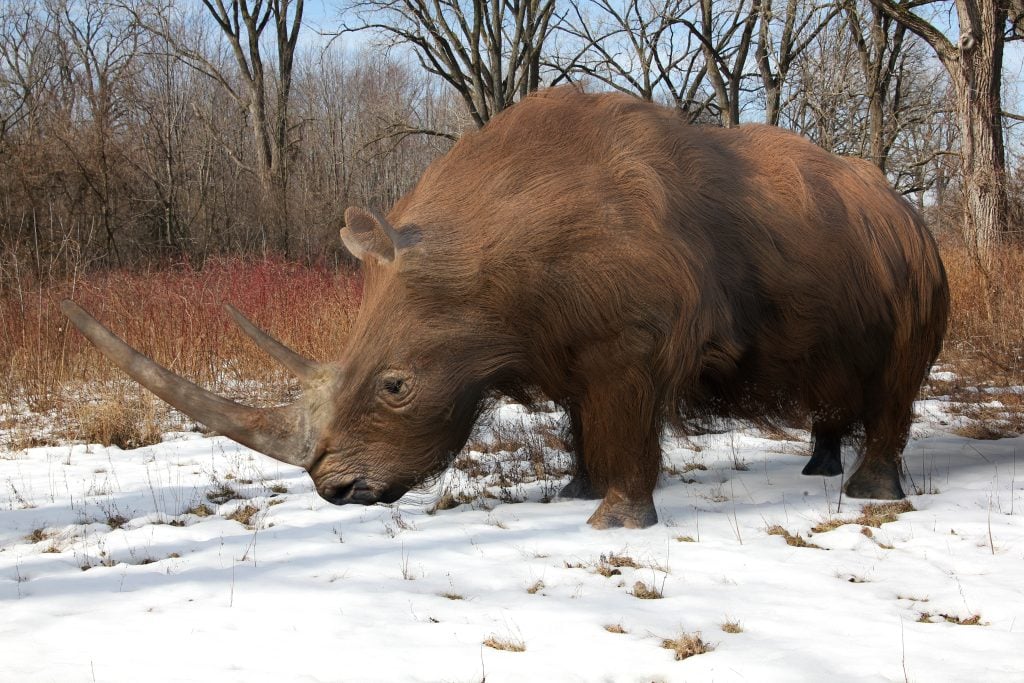
The world saw the last of them over 10,000 years ago, thanks to climate change and human hunting. However, several years ago, scientists from the NE Federal University in Russia got a $4.5 million facility to kickstart a project to bring them back. Maybe someday, Siberia will be home to these creatures once again.
River Dolphin
River dolphins are aquatic mammals adapted to freshwater habitats. Known for their distinctive long snouts and flexible necks, these intelligent creatures navigate murky river waters using echolocation, and much like the popular oceanic dolphins we all love, they are super adorable!
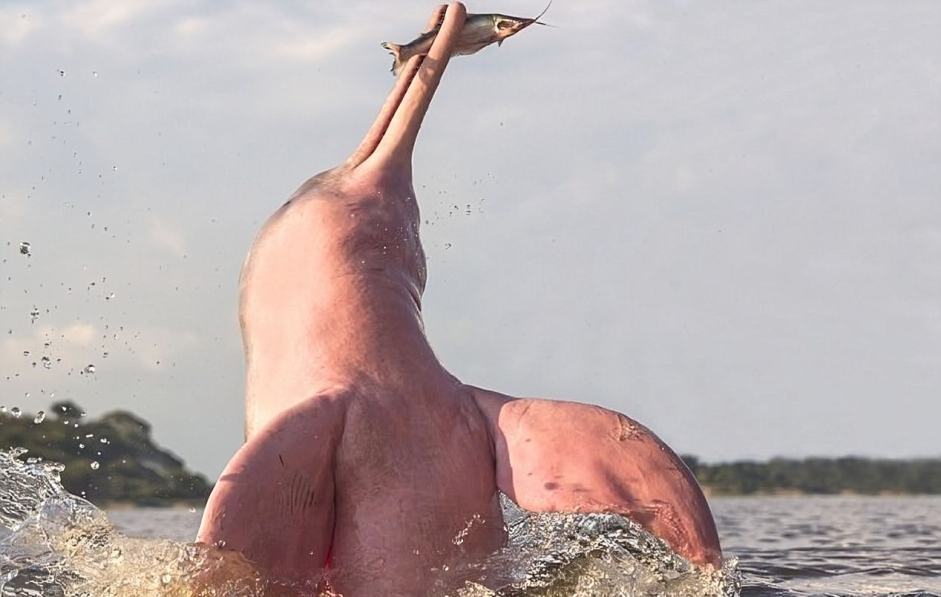
Though a number of species in this family still exist, we lost the Yangtze River dolphin about fifteen years ago. Threatened by habitat degradation and fishing practices, this species faced numerous conservation challenges. That said, conservation experts haven’t given up, so they continue to raise funds and raise awareness to bring them back.
Giant Moa
The great moa was a giant bird that lived in New Zealand. Extinct since the 15th century, they were part of the ratite family and ranged in size from relatively small to the largest known bird species. Some even reached heights of over 3.6 meters!
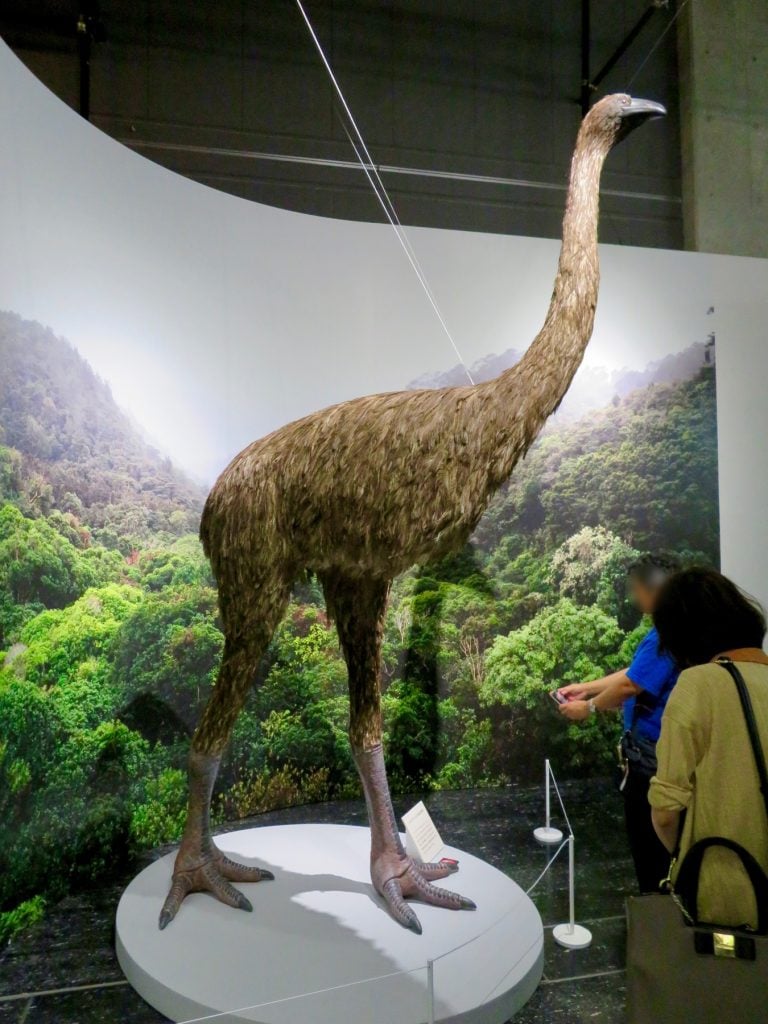
Moa played a crucial role in New Zealand’s ecosystem. Researchers at Havard have an ambitious project to try to bring the bird back, and frankly, from the little yet fascinating tidbits we know about it, we hope they succeed. It’s estimated that to date, they have spent over $1 million on this endeavor.
Pyrenean Ibex
Next up, we have the Pyrenean ibex, which was a subspecies of wild goat that inhabited the mountainous regions of the Pyrenees. Sadly, it became extinct about twenty years ago. The last animal in the species named Celia, perished after a tree fell on it.
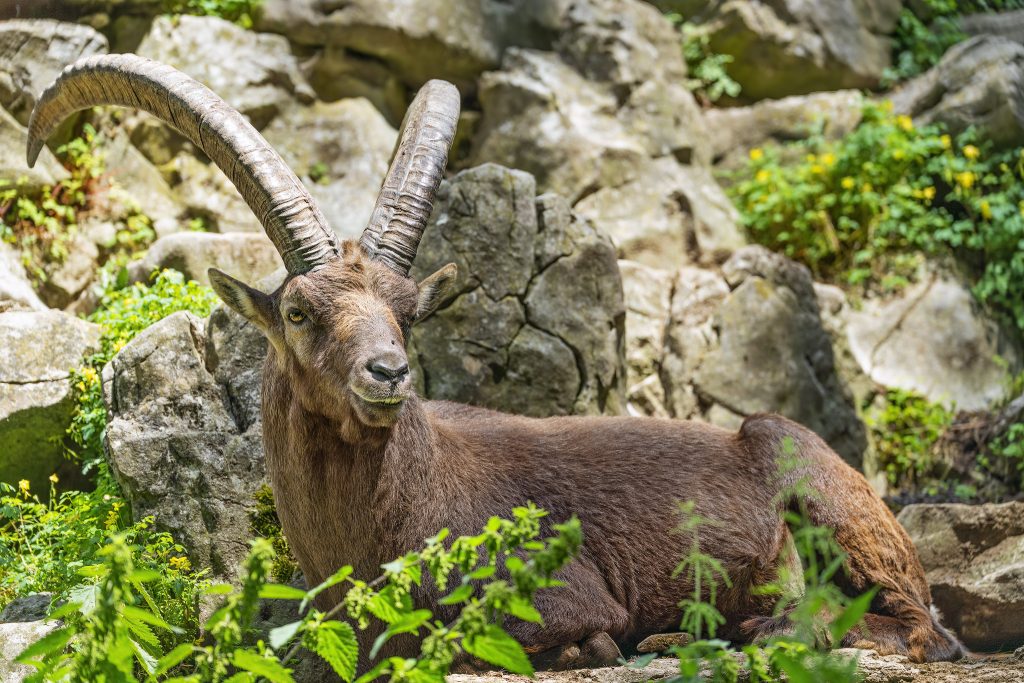
Scientists from Spain later got skin cells from Celia and were able to grow an embryo a few years after that, but sadly, it didn’t live long. Despite that, this project, which has cost about $6 million to date, was seen as a success in many ways since it proved that cloning can be successful.
Quagga
From the stripes alone, you can surely tell which family this guy comes from. The beautiful quagga roamed South Africa before going extinct in the 19th century. Known for its unique appearance with stripes only on the front half of its body, this gorgeous creature was hunted extensively by European settlers.
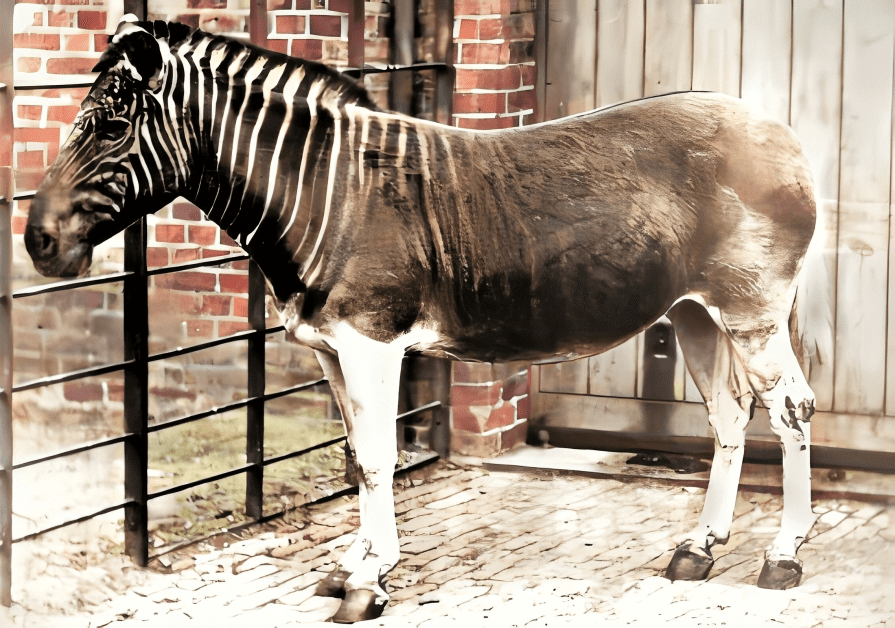
Conservation efforts by Capetown University have been underway since 2016 after scientists got funding. Including getting DNA from preserved skins and other activities, they have used about $6-$8 million so far. With some luck, this beaut could rule over the African plains again.
Great Auk
The Great Auk may not be alive anymore, but it sure was adorable. Standing about 75-85 cm tall, it resembled a penguin with a black back, white belly, and distinctive markings. These unique birds preferred to live in quiet, rocky terrain in the North Atlantic in large colonies.
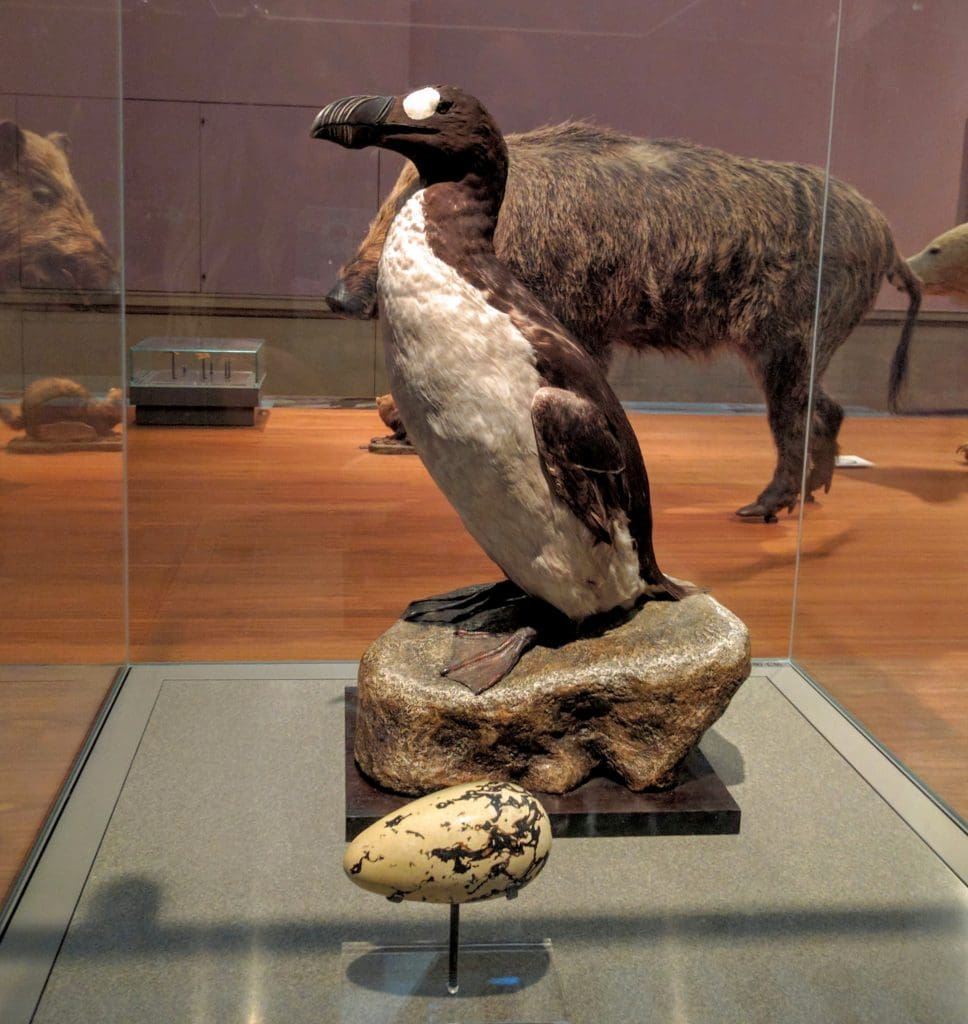
Regrettably, the species met its tragic end in 1844 when the last known pair was killed. Currently, the company Revive and Restore is working on bringing it back, so there’s hope. So far, they’ve dedicated about $2 million to a project they like to describe as a ‘genetic rescue’ through the great auk’s closest relatives.
Labrador Duck
The Labrador Duck, once found along the eastern coast of North America, was a small, diving sea duck with striking black and white plumage. It favored coastal habitats and estuaries for feeding. However, little is known about its behavior or ecology due to sparse historical records.
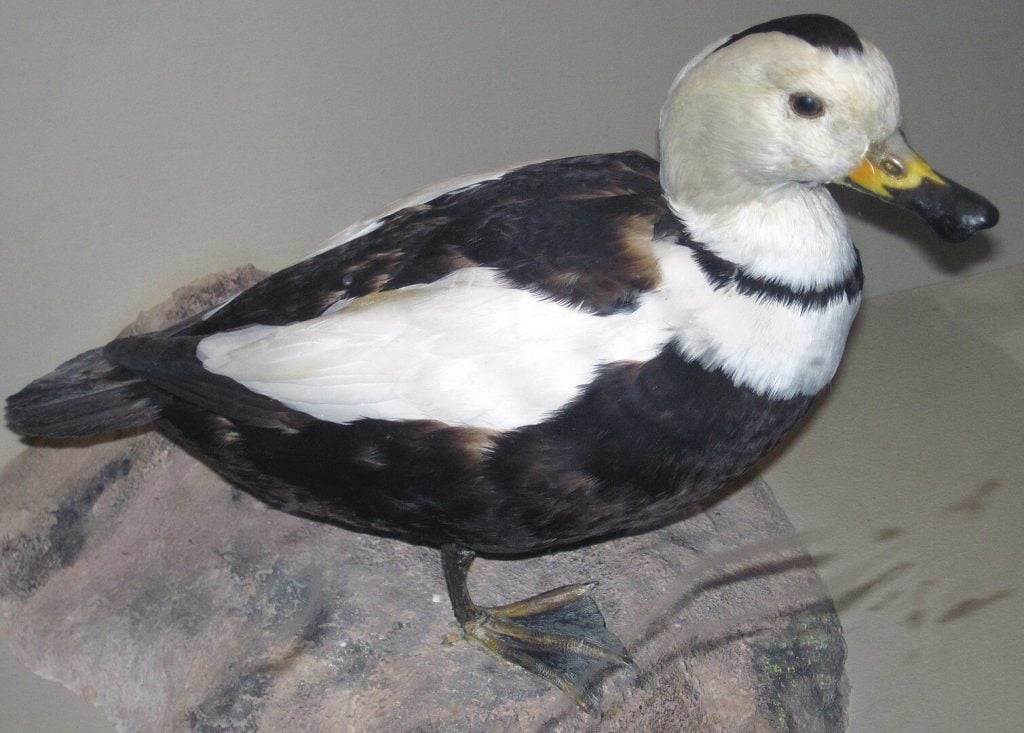
It faced rapid population decline during its final years, and sadly, the last confirmed sighting occurred in 1878. They are one of the few bird species known solely from museum specimens and historical records. However, if science (and potential millions) has anything to do with it, the cute waddlers may return!
Short-Faced Bear
This ferocious bear was one of the world’s biggest terrestrial carnivores. Native to North America during the Pleistocene epoch, it stood up to 12 feet tall on its hind legs and had a distinctively short face compared to other bears.
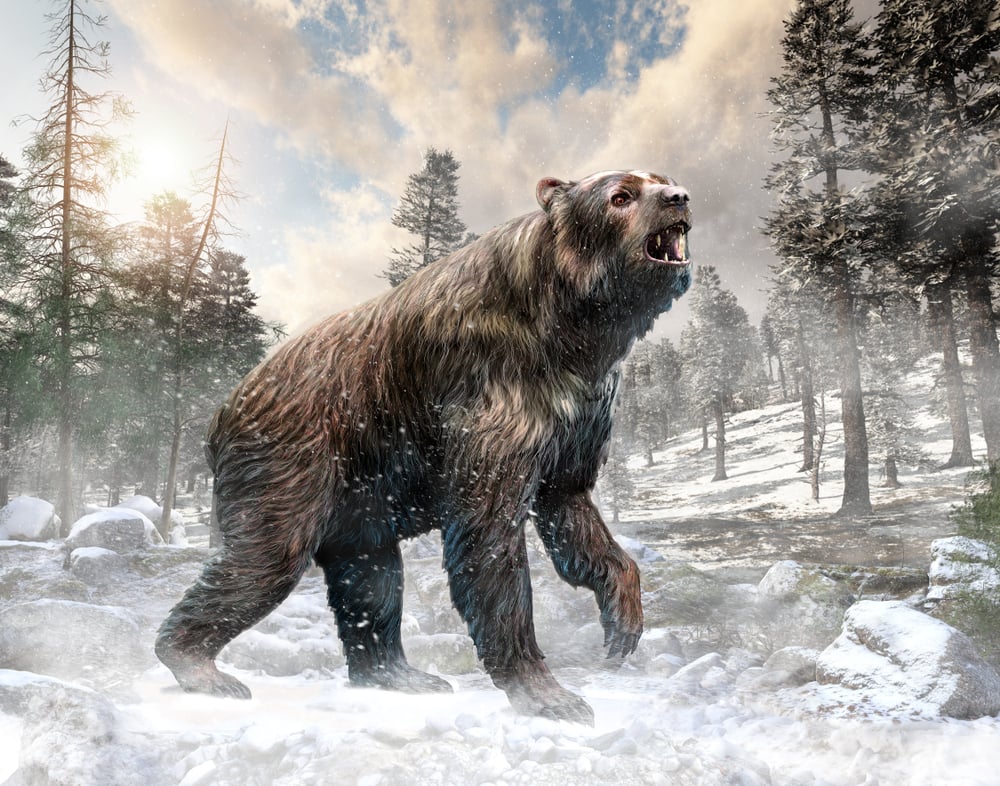
Sporting long limbs for speed, this impressive creature, which has now been extinct for around 11,000 years, likely succumbed to a combination of climate change and intensified human hunting pressure on its prey. So far, there hasn’t been much talk about de-extinction efforts despite its fascinating features.
Heath Hen
The Heath Hen was a subspecies of the Greater Prairie Chicken, once widespread along the eastern United States. It inhabited coastal grasslands and heathlands, particularly in areas like Martha’s Vineyard. Heath Hens were known for their elaborate courtship displays and booming calls during the breeding season.
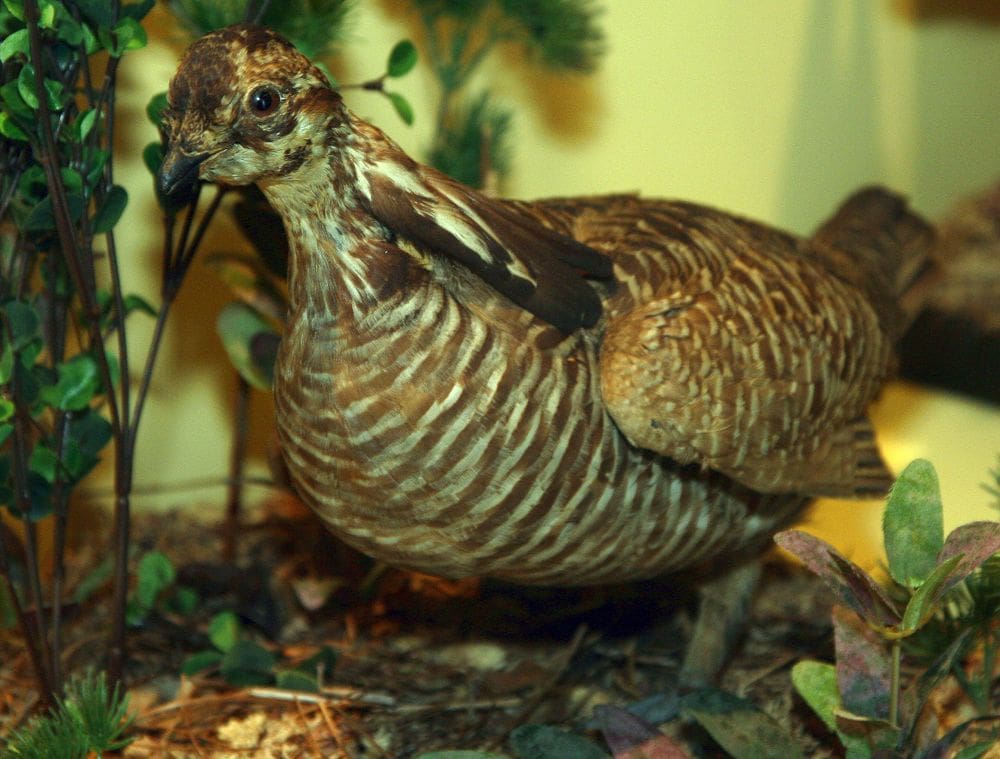
Despite conservation attempts, the species succumbed to extinction in 1932 with the death of “Booming Ben.” On a positive note, Revive and Restore and a university in Texas are now in the second face of a de-extinction project that has now used about $6 million.
Cuban Mcaw
The Cuban Macaw, also known as the Cuban Red Macaw or the Cuban Green Macaw, was a vibrant parrot species native to Cuba. With brilliant red, green, and blue plumage, this bird was a striking sight in its native habitat.
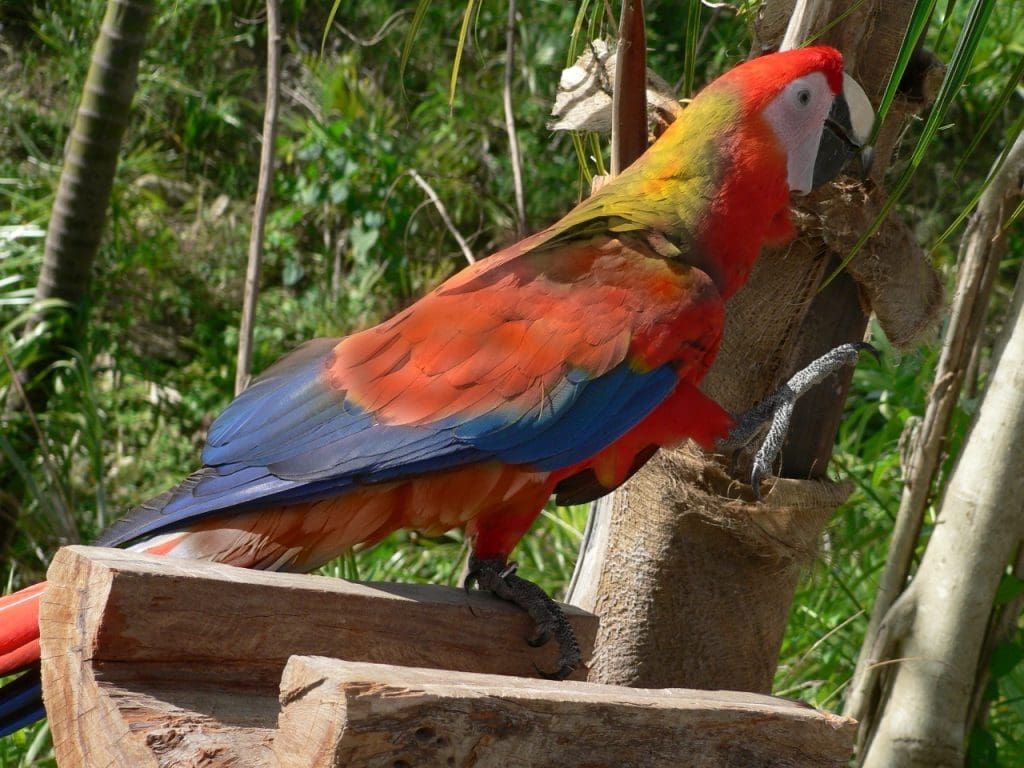
Lastly seen in 1864, this beautiful bird was sadly declared extinct shortly after. Though there have been claims they are still out there, none have been spotted since. With regard to bringing them back, we are all hoping that a group of conservationists will make use of the available DNA in a revival project soon.
Ivory-Billed Woodpecker
Once abundant in southeastern United States forests, this bird was once the largest of its species worldwide. Despite occasional reported sightings, conclusive evidence of its continued existence remains elusive, leading to ongoing conservation efforts and debates among ornithologists and conservationists.
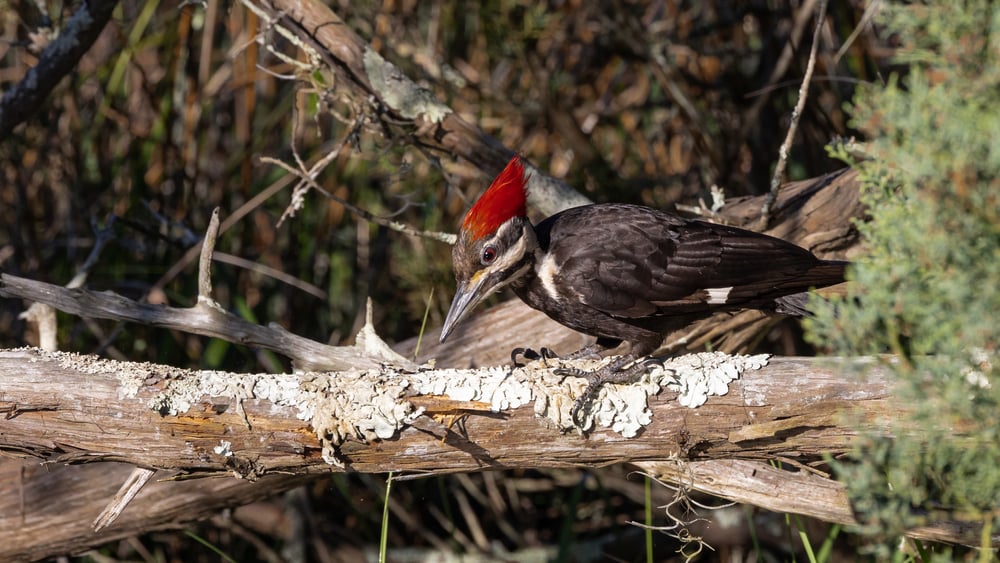
Known for its striking appearance (check out that mohawk!) with a distinctive ivory-colored bill, black plumage, and bright red crest, it was a subject of fascination and concern due to its elusive nature and presumed extinction since the 1940s. A group of private researchers is reportedly cooking up something to bring them back.
Tasmanian Tiger
This animal may look more like a dog than anything, but it is, in fact, the Tasmanian tiger. Despite its name and resemblance to canids, it was not a true tiger and was closer genetically to kangaroos and wombats. Makes you wonder why anyone chose to name it the Tasmanian tiger!
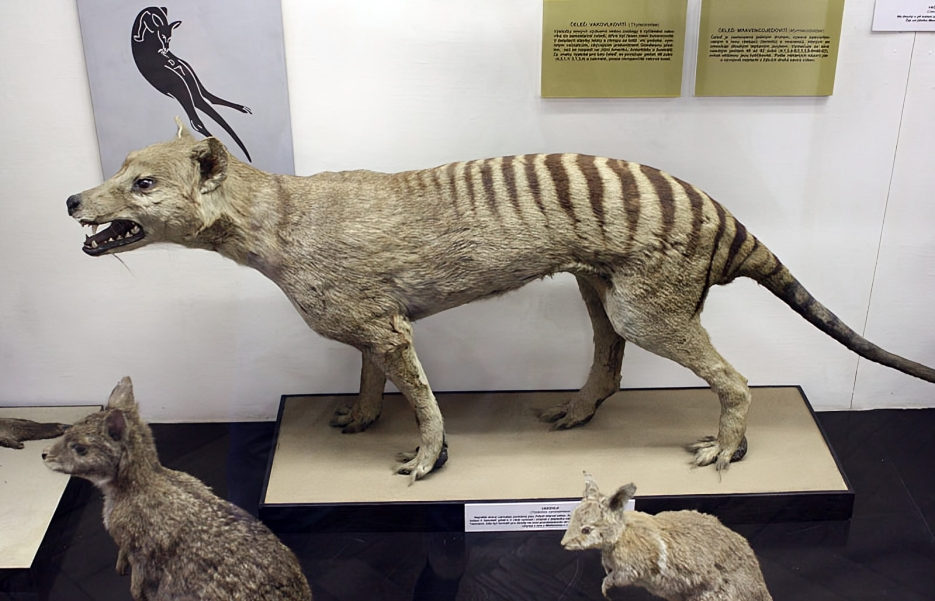
The world saw the last of its kind in 1936. But according to recent advancements, that wasn’t the last we’ll see of them. Thanks to a project that has used about $6 million to date, scientists from The University of Melbourne successfully sequenced their genome, which is a huge step in their de-extinction.
Elephant Bird
The ostrich may have all the fame now but when it comes to big birds, it used to have lots of competition. Belonging to the family Aepyornithidae, this was among the largest birds to have ever existed, with some species standing over 3 meters tall and weighing up to 730 kilograms. That’s one heavy bird!
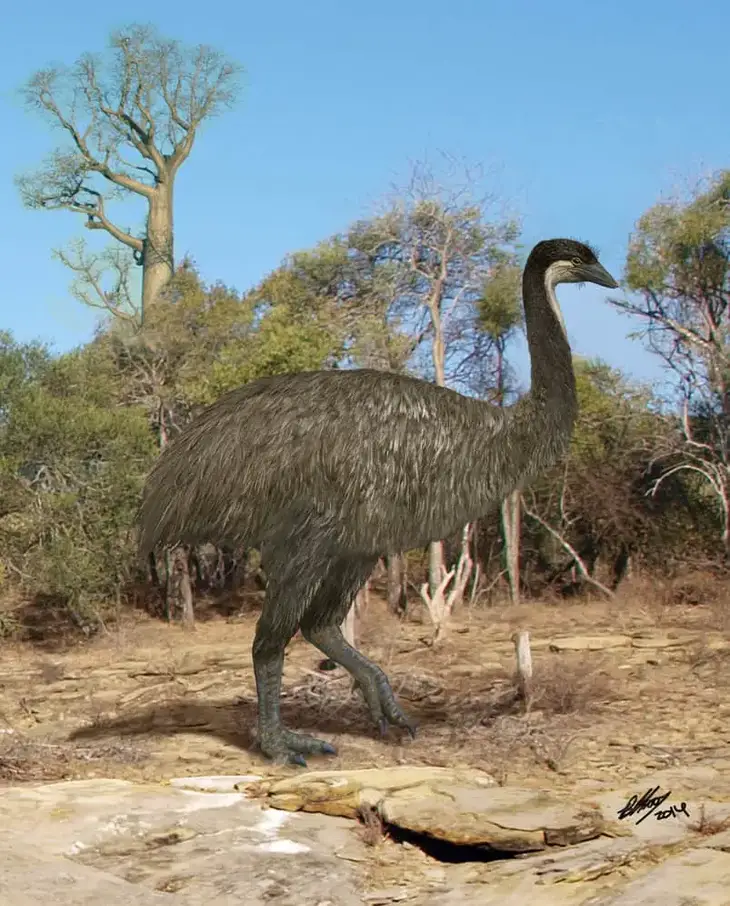
Exact details about its behavior and the circumstances that led to its extinction are not that clear because it lived around 1000 CE, which is a really long time ago. That also deters revival efforts. Hopefully, with science and a couple million dollars, scientists will overcome the challenges!
Aurochs
The Aurochs was a massive, wild ancestor of modern cattle. Roaming across Europe, Asia, and North Africa, these majestic creatures stood nearly 6 feet tall and weighed over a ton. Aurochs played a significant role in ancient cultures and were often featured in cave paintings and revered in mythology.
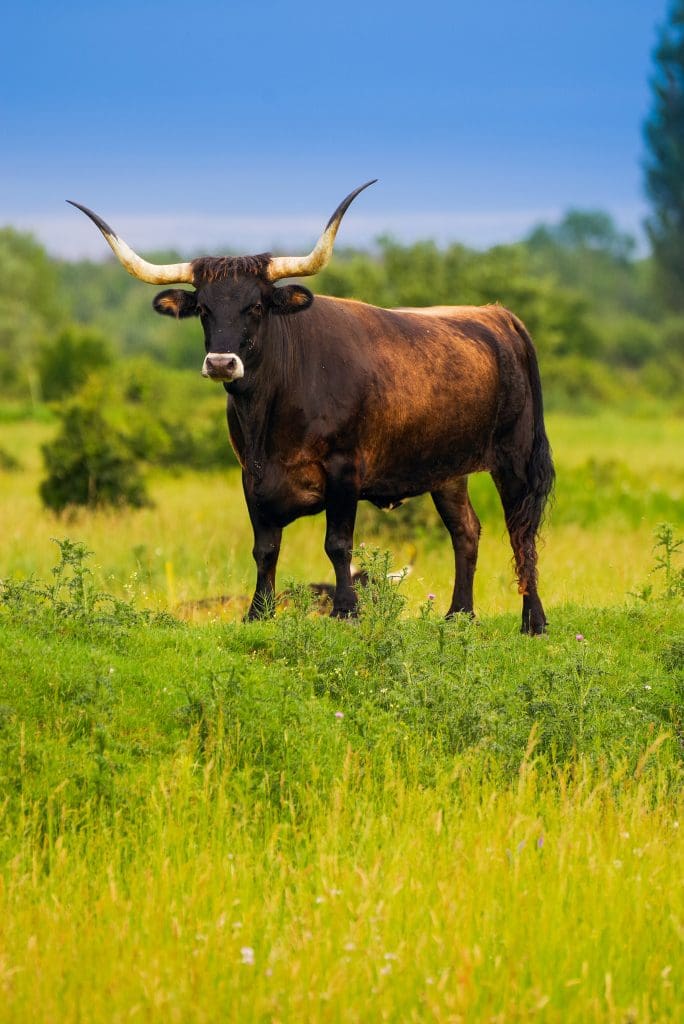
Unfortunately, they became extinct in the 17th century due to extreme hunting and loss of their habitat. Efforts to revive the Aurochs through selective breeding and genetic engineering are ongoing thanks to private researchers who reportedly have an $8 million project in the pipeline.
Woolly Mammoth
Next, we have a relatively famous face. The Woolly Mammoth was a colossal, shaggy relative of modern elephants that thrived during the last ice age. Adapted to cold environments, these herbivores possessed long, curved tusks and a thick, woolly coat.
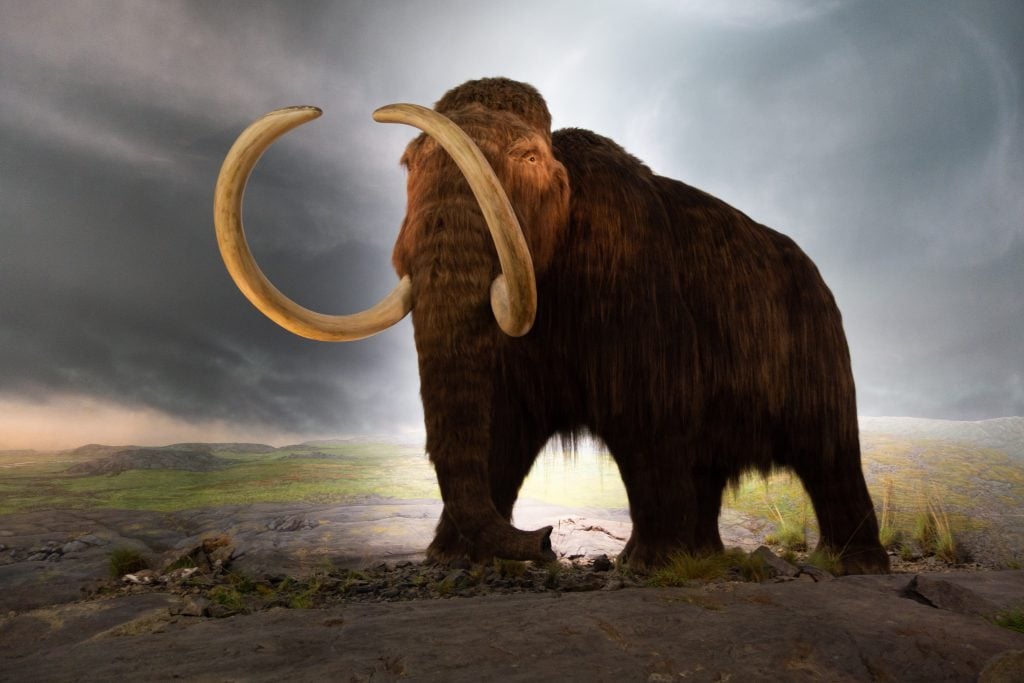
Recent advancements in genetic technology and the recovery of a well-preserved mammoth in 2010 have greatly impacted the potential for resurrecting Woolly Mammoths through genetic engineering. Scientists from Kindai University, Japan, have spent over $10 million on this project that may see these massive creatures making a grand return!
Sabertoothed Tiger
Yeap, it looks like our favorite characters from Ice Age are all here! The Saber-toothed Tiger was a fearsome carnivore that lived during the Pleistocene. Characterized by its long, curved canine teeth, it belonged to the family Felidae. They were last reported to be alive around 10,000 years ago.
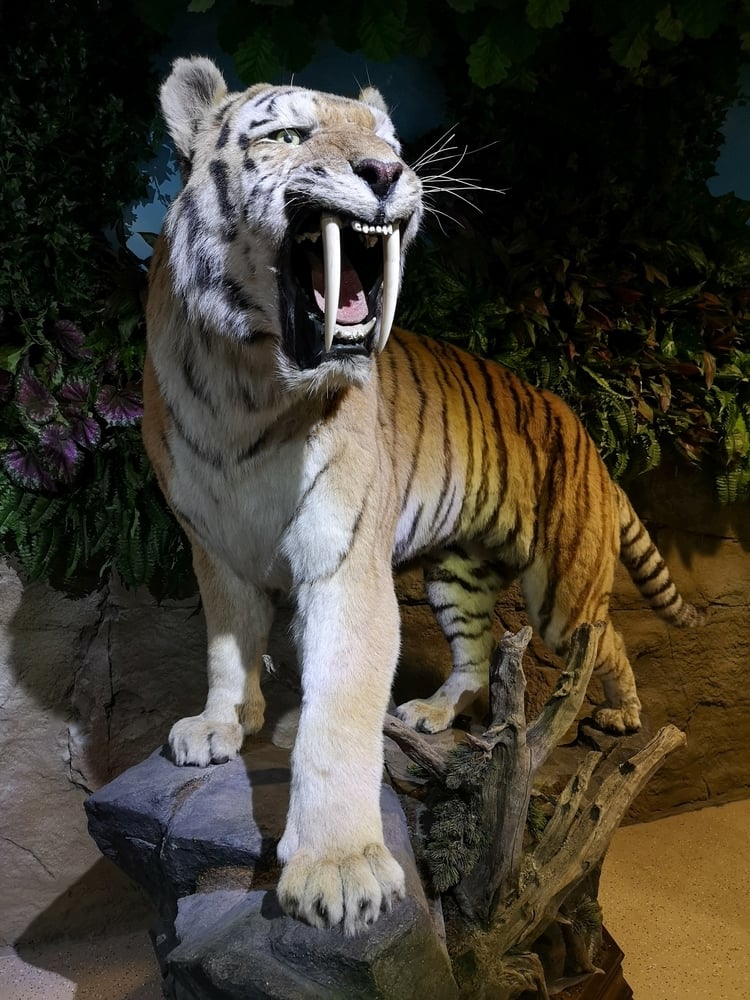
Fossil evidence suggests it primarily hunted big animals like mammoths and sloths. Yeap, that scene in the movie where Diego’s friends almost killed Sid and Manny was more real than we imagined. Over $2 million has been spent in efforts to bring these guys back, so always be on the lookout!
Dusky Seaside Sparrow
The Dusky Seaside Sparrow was a small, elusive bird native to Florida’s coastal marshes. Unique among sparrows for its dark plumage, it faced rapid decline due to habitat destruction and pesticide use in the mid-20th century. By the 1970s, only a handful had survived, and they were all male.
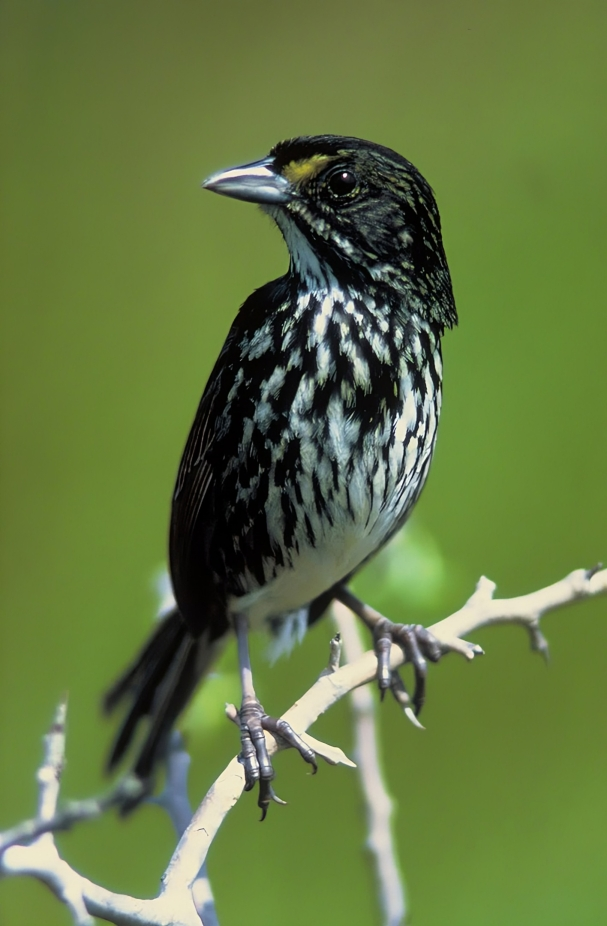
Despite conservation efforts, the last known Dusky Seaside Sparrow, named “Orange Band,” died in captivity in 1987, marking the species’ extinction. Luckily, bird conservationists had encouraged it to breed. So far, about $100000 has been spent in an effort to bring them back to the wild.
Dodo Bird
The dodo bird is another famous extinct animal. This species was a flightless bird native to Mauritius. Despite its fame, it actually became extinct in the late 17th century. Thankfully, scientists from the University of Kent have a $6 million project dedicated to reinventing it through its closest living relatives.
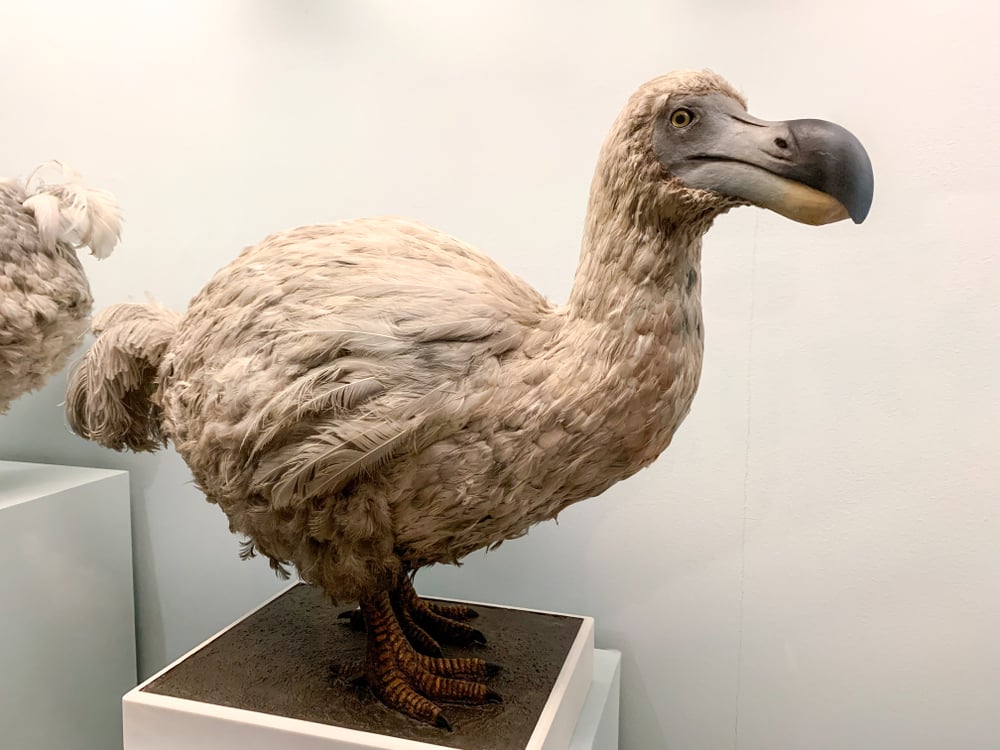
Standing about a meter tall and weighing around 10-18 kilograms, the dodo had a large beak, stout body, and short wings. It is often depicted as a symbol of human-induced extinction and the importance of conservation efforts to preserve endangered species.
Irish Elk
The Irish elk, a majestic deer species known for its impressively massive antlers, roamed the lands of Eurasia and North Africa during the Pleistocene epoch, a geological time period spanning from about 2.6 million to 11,700 years ago. It stood about 2 meters tall and had massive antlers that could span up to 4 meters.
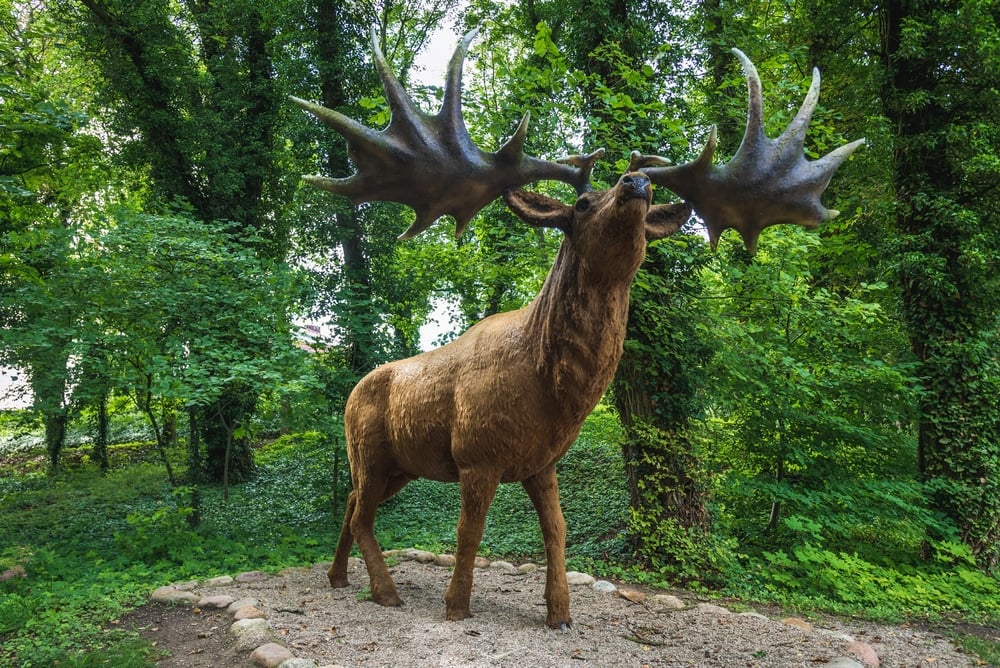
These were likely used more for display. The Irish elk became extinct around 7,700 years ago, presumably due to, in combination with other factors, its inability to evolve to hold up the gigantic antlers. Hopefully, once the scientists at Novosibirsk University are successful in their cloning project, they’ll have learned how to fix this.
Caspian Tiger
The Caspian tiger was once abundant in Central Asia, ranging from Turkey to China and Russia. It was massive and weighed up to 240 kg. Characterized by its thick fur and large size, it roamed diverse habitats like forests, marshes, and mountains. Sounds very ‘King of the Jungle.’
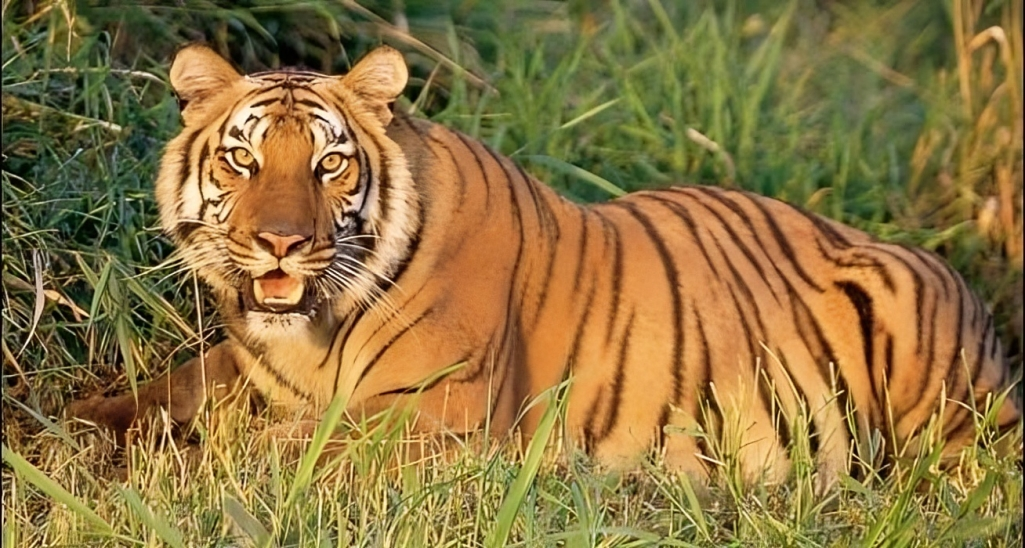
Unfortunately, due to extensive hunting and habitat loss, it became extinct in the mid-20th century. Efforts to reintroduce it or preserve its genetic lineage continue, thanks to the fact that it’s very closely related to the Siberian tiger. So far, Cambridge has spent about $60000 on a project of that kind.
Carolina Parakeet
When it comes to plumage, the Carolina Parakeet had one of the most beautiful ones. With vibrant plumage and a social nature, they formed large flocks. However, due to habitat loss and being seen as agricultural pests, they were hunted, and thus, their numbers declined rapidly.
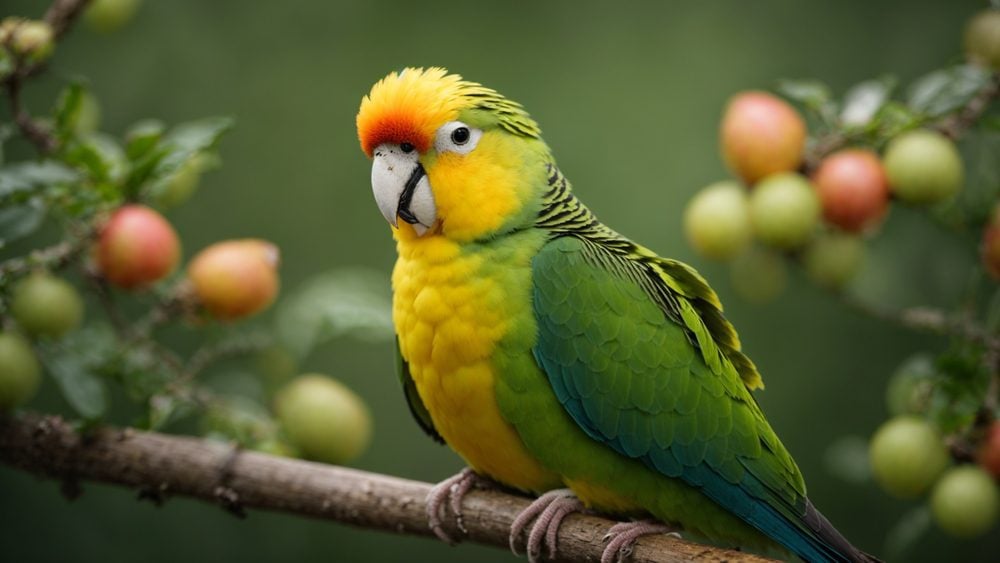
The last confirmed sighting was in 1910 before the species was declared extinct in 1939. However, since some well-preserved specimens exist, there is always a chance that their DNA could be extracted to start an initiative to bring them back.
Passenger Pigeon
The Passenger Pigeon, once abundant in North America, formed massive flocks that darkened the sky for days. Their population once numbered in the billions, making them one of the most common bird species. However, extensive hunting and other factors led to their rapid decline.
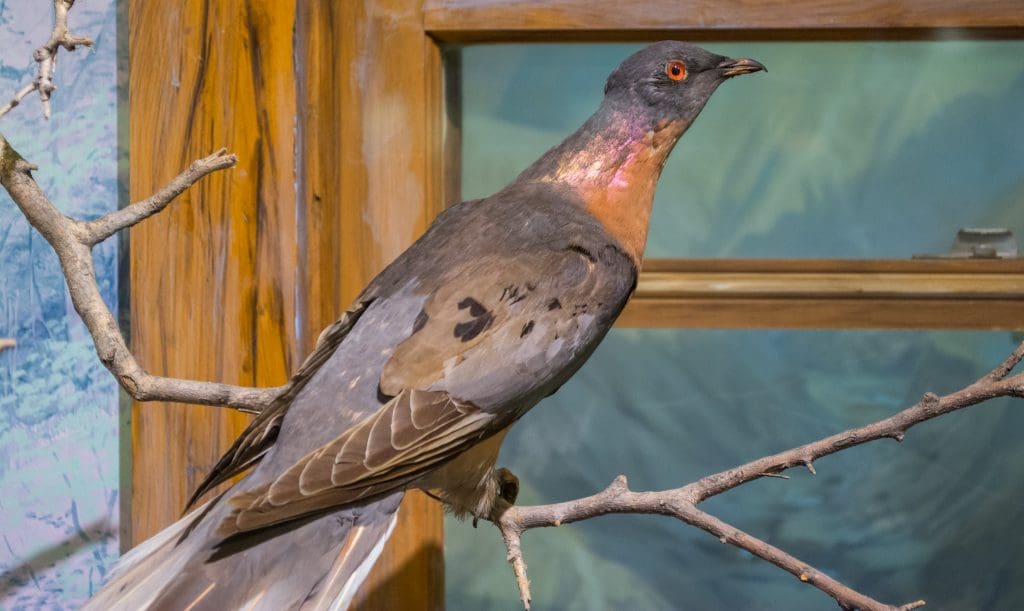
The last known bird of its kind lived in captivity till 1914, marking their extinction. Not to worry, however, since researchers at Revive and Restore have made great strides in bringing them back, and they hope to introduce the world to a new generation of these birds in 2025!
Alaunts
The Alaunt is an ancient breed of large, muscular dogs with a history dating back to several ancient civilizations, including the Assyrians and Alans. Originally bred for hunting, herding, and guarding, they were renowned for their strength, loyalty, and versatility.

Alaunts were prized companions of knights and nobles during the Middle Ages and were often depicted in medieval artwork. However, their exact appearance and characteristics varied across regions and periods. Today, efforts are underway to revive this ancient breed to ensure its legacy endures in modern times.
Alpine Mastiff
Alpine Mastiffs, also known as St. Bernards, are large, powerful dogs originating from the Swiss Alps. Originally bred by monks from the Saint Bernard Hospice for rescue work in the 17th century, they’re renowned for their loyalty, intelligence, and gentle demeanor.

These dogs possess a thick, weather-resistant coat, typically white with reddish-brown markings. American and European breeders have spent over $10000 in an effort to bring them back using breeds closely related to it. Something tells us they will succeed sooner rather than later.
Broad-faced Potoroo
The Broad-faced Potoroo is a small marsupial endemic to the rainforests of northeastern Queensland, Australia. Characterized by its distinctive broad face and compact body, it primarily inhabited dense undergrowth and moist forest floors. Sadly, they were hunted by feral cats to the point of endangerment.
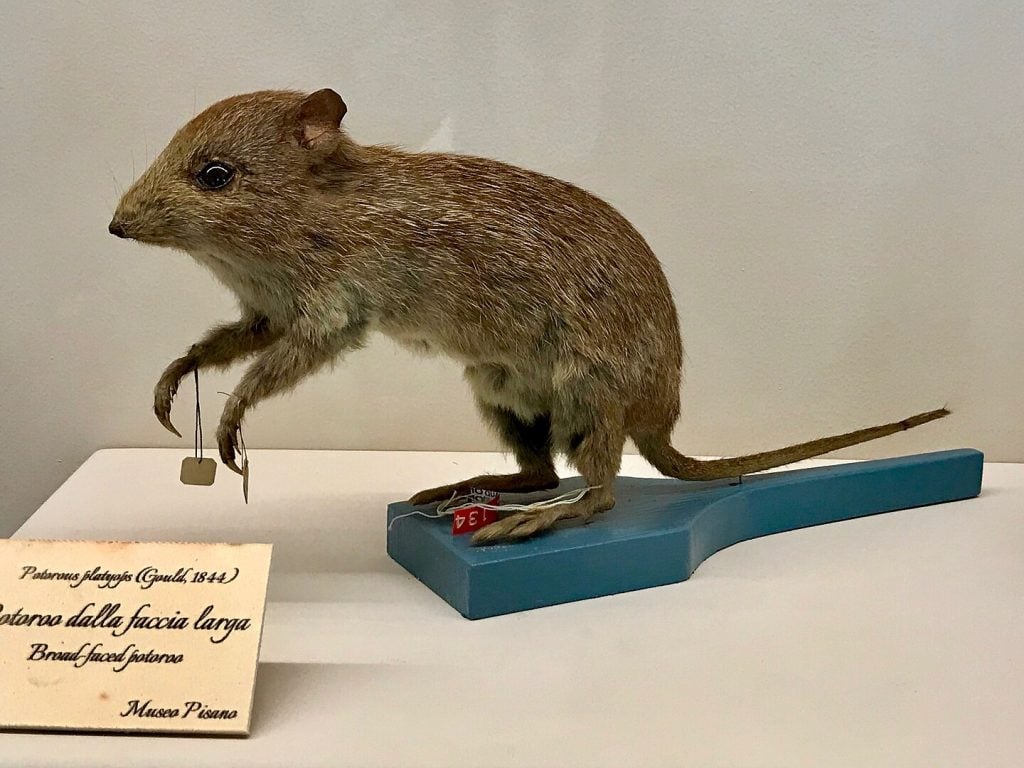
Conservation efforts by Tasmanian Geographic aim to protect its remaining habitat and establish breeding programs. Despite its elusive nature, studies suggest it plays a crucial role in ecosystem dynamics. As a result, the people involved are raising awareness to ensure they survive if they return.
Grey’s Wallaby
Grey’s Wallaby was a medium-sized marsupial primarily found in northeastern Australia, particularly in the coastal regions of Queensland and New South Wales. Named after Sir George Grey, a prominent 19th-century explorer, this guy is also known as the Grey Kangaroo.
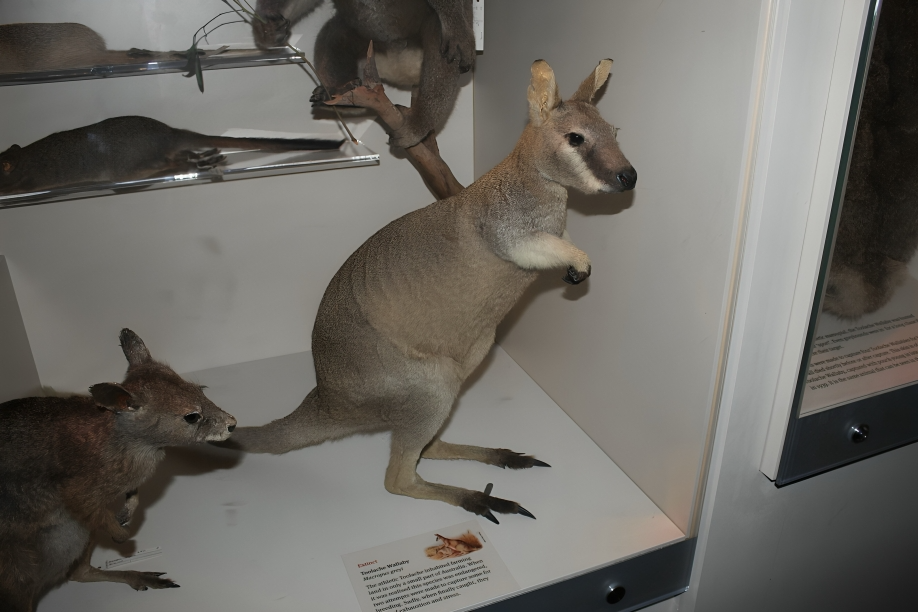
Sporting a distinctive grey-brown fur coat, it inhabited various habitats, including forests, woodlands, and coastal scrublands. This herbivorous marsupial was primarily nocturnal, grazing on a diet of grass and vegetation. Conservationists have spent upwards of $3500 trying to bring them back.
Caribbean Ground Sloth
The Caribbean Ground Sloth was a large, herbivorous mammal that inhabited the Caribbean islands during the Pleistocene. Belonging to the family Megalonychidae, it was closely related to the extant two-toed sloths. However, these ones were bigger, immensely stronger, and even vicious.
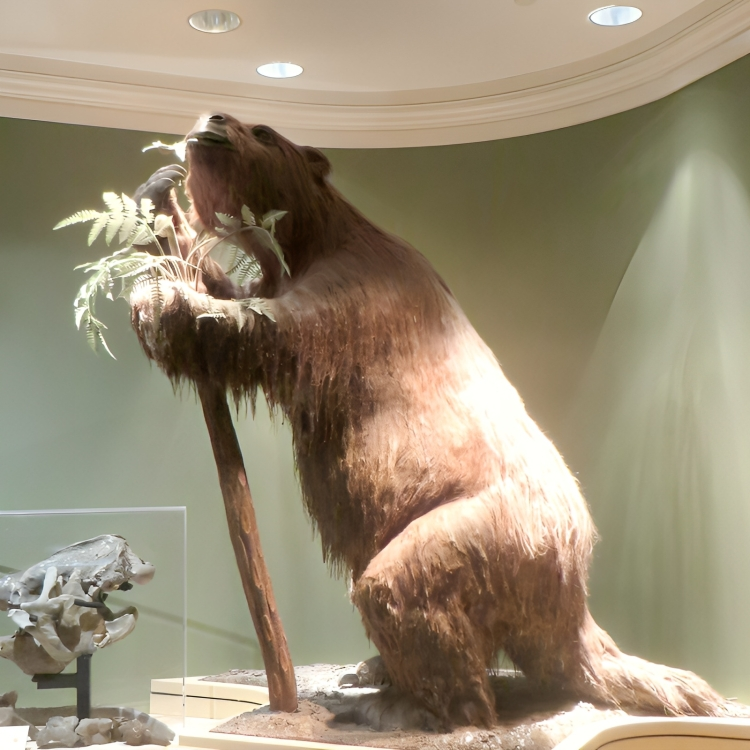
Fossil evidence suggests they lived in forests and savannas. The Caribbean Ground Sloth likely faced extinction due to the deterioration of natural habitats and hunting by early human settlers. That said, scientists from the BREAS project reportedly have about $2 million set aside to look into their de-extinction.
Steller’s Sea Cow
This was a massive marine mammal that grew up to 9 meters in length. Unfortunately, it was ruthlessly hunted off the face of the planet less than 30 years after it was discovered. It’s also said that due to an increase in sea urchins, eventually, there wasn’t enough shallow-water kelp for them to feed on.
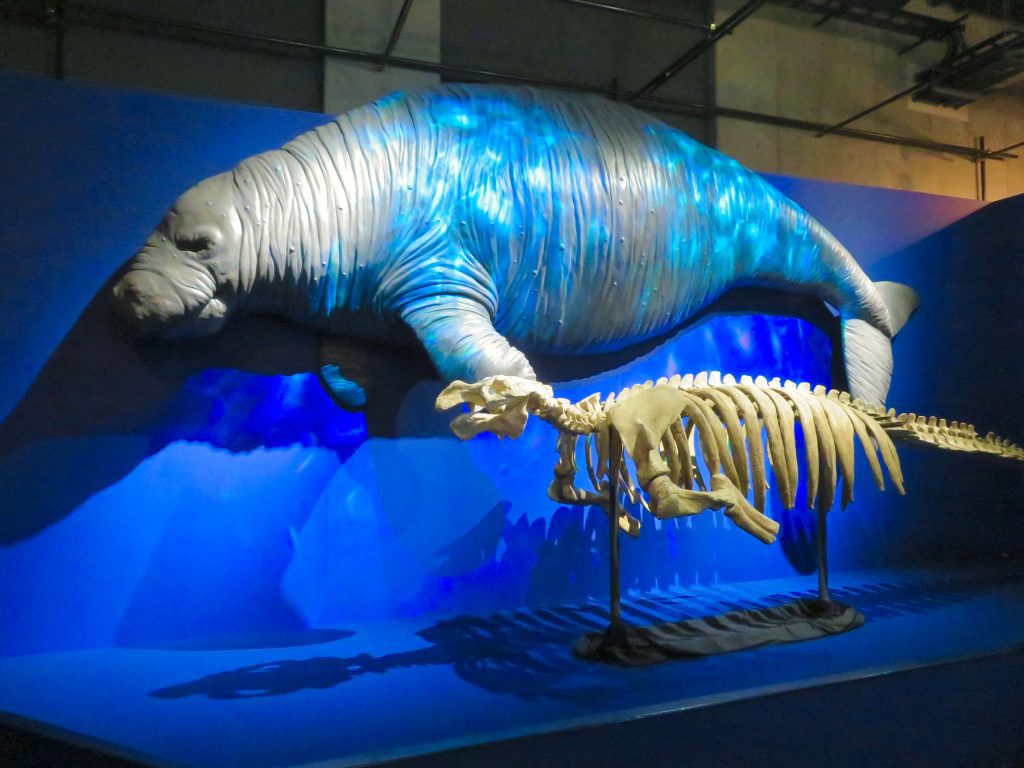
With a robust body, it was ill-equipped to defend itself against hunting by sailors and fur traders. By 1768, the last of its species perished, marking one of the quickest extinctions of a large mammal due to human activity. Still, scientists from NCBI have resources dedicated to its research.
Glyptodon
The Glyptodon was a prehistoric mammal that resembled a gigantic armadillo that lived during the Pleistocene epoch. Native to South America, it roamed grasslands and forests, equipped with a heavy, dome-shaped shell covering its body. It measured up to 3.5 meters in length and weighed over a ton.
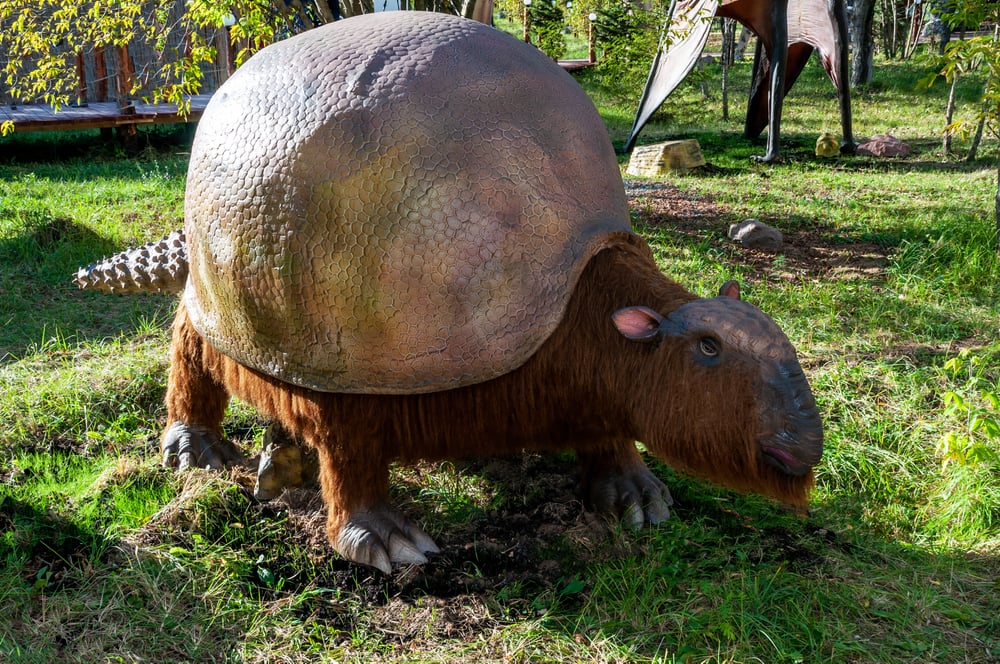
It utilized its armor for protection against predators. Despite its formidable defenses, however, a decrease in native environments and overhunting by early humans likely contributed to its extinction around 10,000 years ago. Scientists from Montpellier University recreated some of its DNA as part of a project that costs over $100000.
Cordoba Fighting Dog
The Cordoba Fighting Dog from Argentina was bred for dogfighting. It was known for its muscular build and aggressive temperament. Developed in the 20th century, it descended from various bulldog and mastiff breeds. These dogs were trained and pitted against each other in brutal matches, resulting in injuries and fatalities.

Due to increasing societal awareness and legal crackdowns on dogfighting, the breed fell out of favor. By the mid-20th century, efforts to preserve the breed’s original purpose waned, leading to its decline and eventual extinction. Like with the alpine mastiff, breeders have spent over $10000 trying to bring them back.
Hispaniola Monkey
The Hispaniola monkey was an endemic primate of Hispaniola, present-day Dominican Republic, which went extinct around the 16th century. The precise time of its demise is said to be around the 1500s and is widely believed to be linked to the European settlement of Hispaniola post-1492.
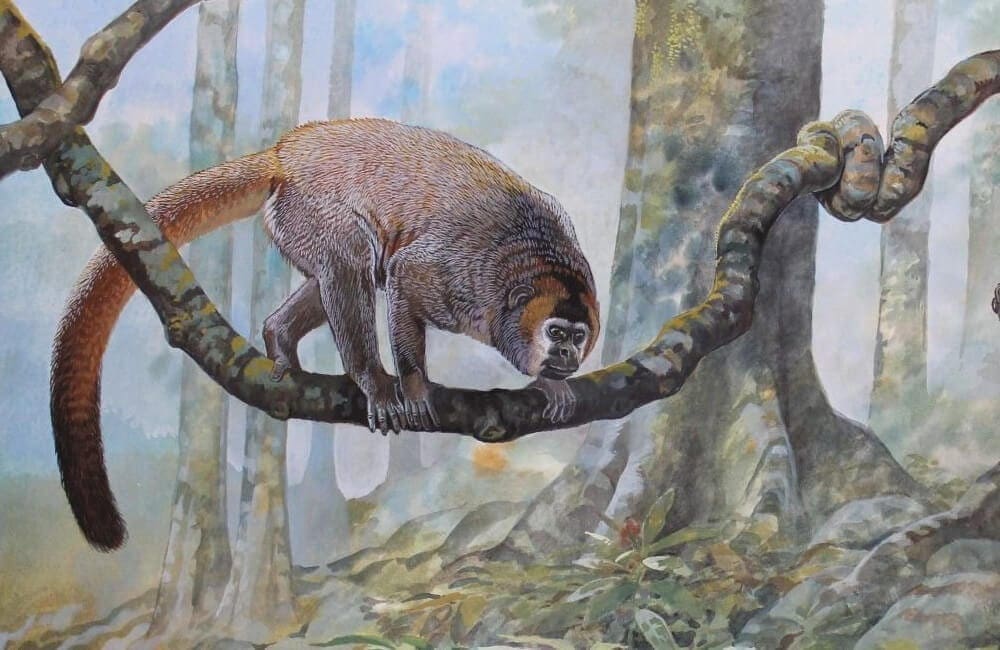
It’s likely that this species succumbed to pressures likely stemming from habitat destruction, hunting, and competition with introduced species. Since not much about it and its relatives are known, researchers at Duke University have dedicated time and resources (about $15000) to learn more about this monkey.
St. Vincent’s Colilargo
Ever heard of the St. Vincent Colilargo? Discovered by Herbert Huntingdon Smith, this curious rodent has baffled scientists since 1898 when Oldfield Thomas named it Oryzomys victus. Its true identity remains a puzzle, though Clayton Ray’s 1962 study hinted at ties to Oligoryzomys.

With its reddish fur and peculiar traits, this enigmatic creature continues to intrigue researchers. Its origins, whether native to St. Vincent or introduced, add an extra layer of mystery to its captivating tale. To date, researchers at IUCN and Havard are still looking into the possibilities of its existence despite the extinction claims.
Atlantic Gray Whale
The Atlantic grey whale, also known as the North Atlantic gray whale, was believed to have gone extinct in the 17th century. However, sporadic sightings have been reported, suggesting the possibility of its survival. But these reports remain unconfirmed, with no concrete evidence of a viable population.
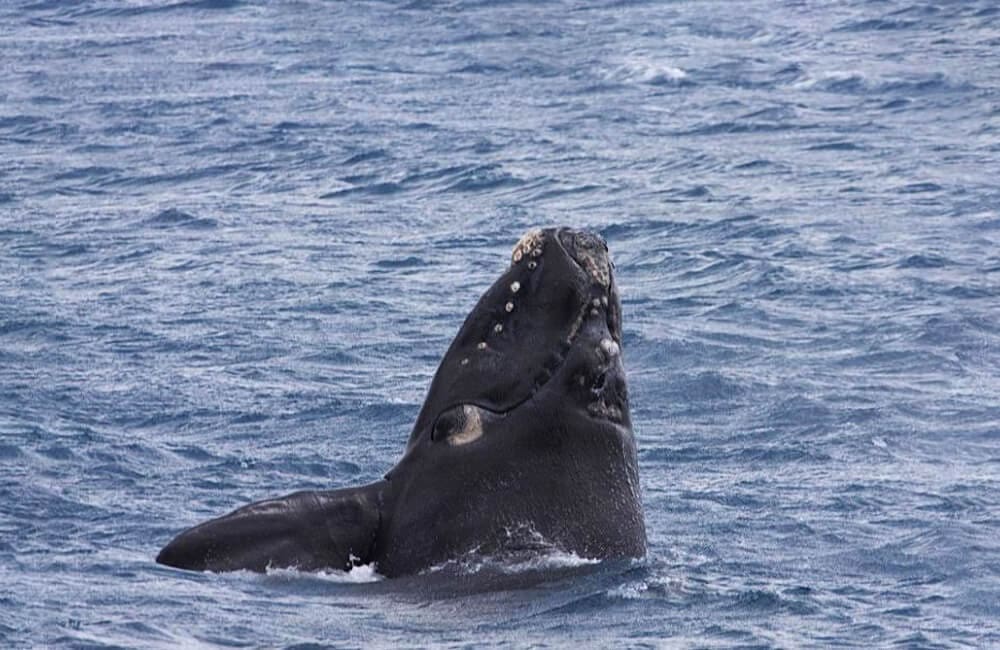
Historically, the Atlantic grey whale inhabited the coastal waters of the North Atlantic, particularly around Europe and North America. Overhunting during the whaling era is thought to have led to its demise. That said, efforts and funding that amount to over $25000 have been dedicated to confirming its current status. So far, they’re quite promising.
California Grizzly Bear
The California Grizzly Bear, Ursus arctos californicus, was a subspecies of the brown bear native to California. It was known for its size and incredible strength, with males reaching up to 8 feet in height and weighing over 2,000 pounds.
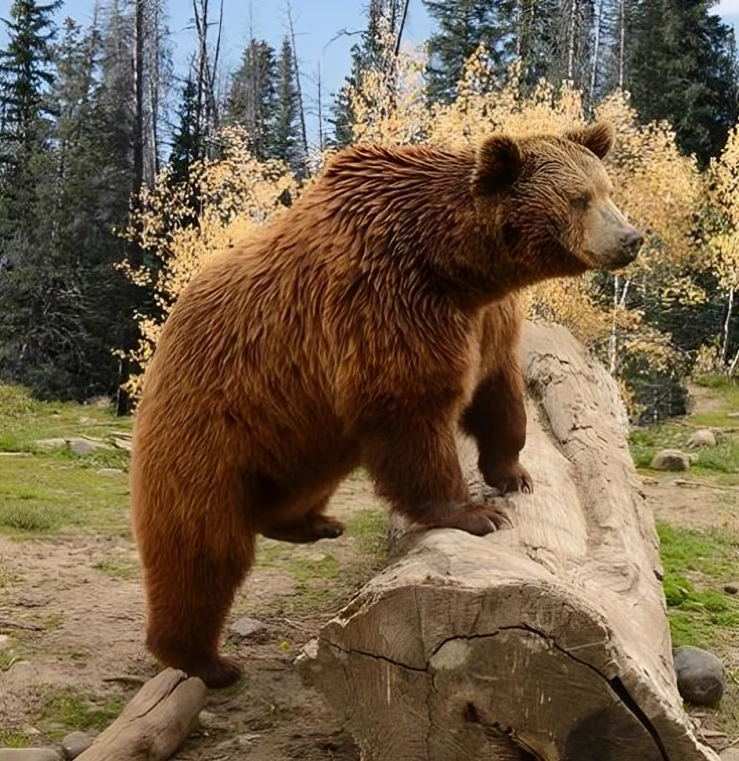
The last one was killed in 1922, and the species was declared extinct two years later. Research into de-extinction is currently underway by the California Grizzly Research Network. Thanks to them and other benefactors, the world could see the return of this species.
Molossus
Revered in ancient Greece, this dog epitomized strength and loyalty. Bred as guardians for livestock and companions, their legacy endures in modern mastiffs and large dog breeds. They were quite massive and intimidating, and thanks to that and their protective instincts, they were highly valued.

Molossus dogs were esteemed companions who embodied courage and fidelity. Today, echoes of their noble lineage persist. Though there are a few that still reportedly exist, it is extremely rare to find one outside their original homeland, Greece, as they are heavily protected.
Newfoundland Wolf
The Newfoundland wolf, a medium-sized and slender-skulled species, boasted a white pelt, with some individuals exhibiting melanism. Its unique internal accessory cusp angles set it apart from mainland relatives. Sadly, the last of its kind met its demise in 1911.
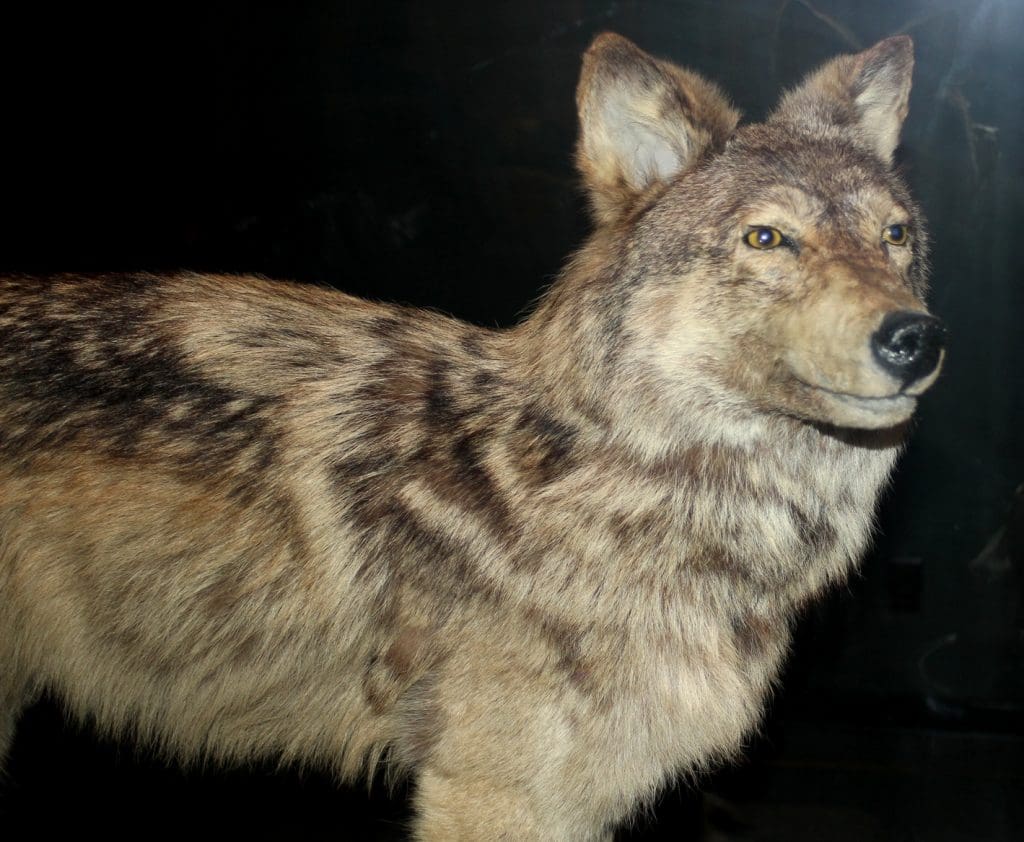
Or so everyone thought! Back in 2019, a group of conservationists spotted some of them after a guy accidentally killed one thinking it was a coyote. Currently, more efforts funded by the government and enforced through the Newfoundland Department of Conservation are being put in to ensure their survival.
Camelops
Camelops, an extinct genus of camelids, lived in North America. These large mammals resembled modern-day camels but were larger, standing up to 3.5 meters tall at the shoulders. They possessed elongated limbs suited for traversing varied landscapes, from grasslands to forests. Camelops likely browsed on shrubs and vegetation.
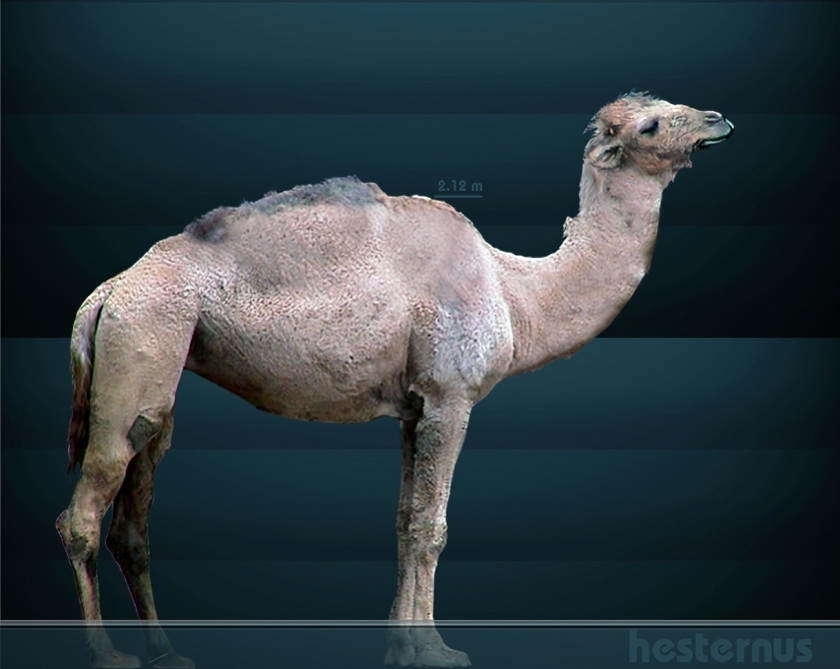
Their extinction, around 10,000 years ago, is theorized to be influenced by climate change and human hunting pressures. They may have had adaptations for surviving in diverse environments, including specialized teeth for consuming abrasive vegetation and efficient water retention mechanisms in their kidneys. A few researchers are looking into the possibility of reintroduction.
Cascade Funnel-web Spider
The Cascade funnel-web spider (Hadronyche formidabilis) is a venomous arachnid found in the wet forests of the Australian Cascade Range. It belongs to the family Atracidae, known for producing some of the most dangerous spiders in Australia. The Cascade funnel-web is distinguished by its glossy black body, robust build, and potent venom.
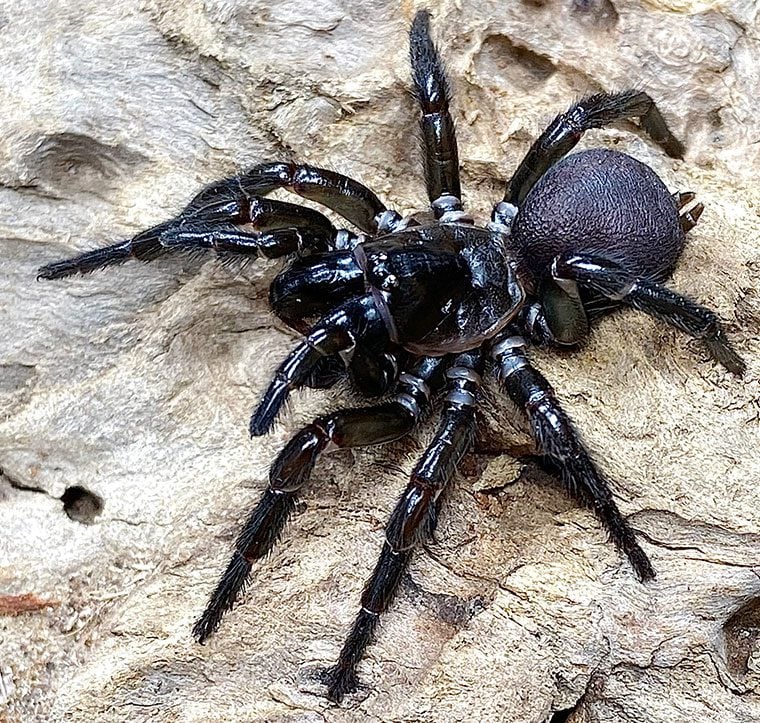
This bug has killed over 20 humans, so yeah, it’s deadly. Despite its intimidating nature, little is known about its behavior and ecology due to its remote habitat and elusive nature. Plus, they became largely extinct in the ’90s thanks to urbanization. Still, scientists are trying to learn as much as they can about them.
Adriatic Sturgeon
The Adriatic sturgeon is a critically endangered species native to the Adriatic Sea. It is one of the smallest sturgeon species, typically reaching lengths of up to 2 meters. Classified as critically endangered, this species is known for its elongated body and bony plates called scutes.
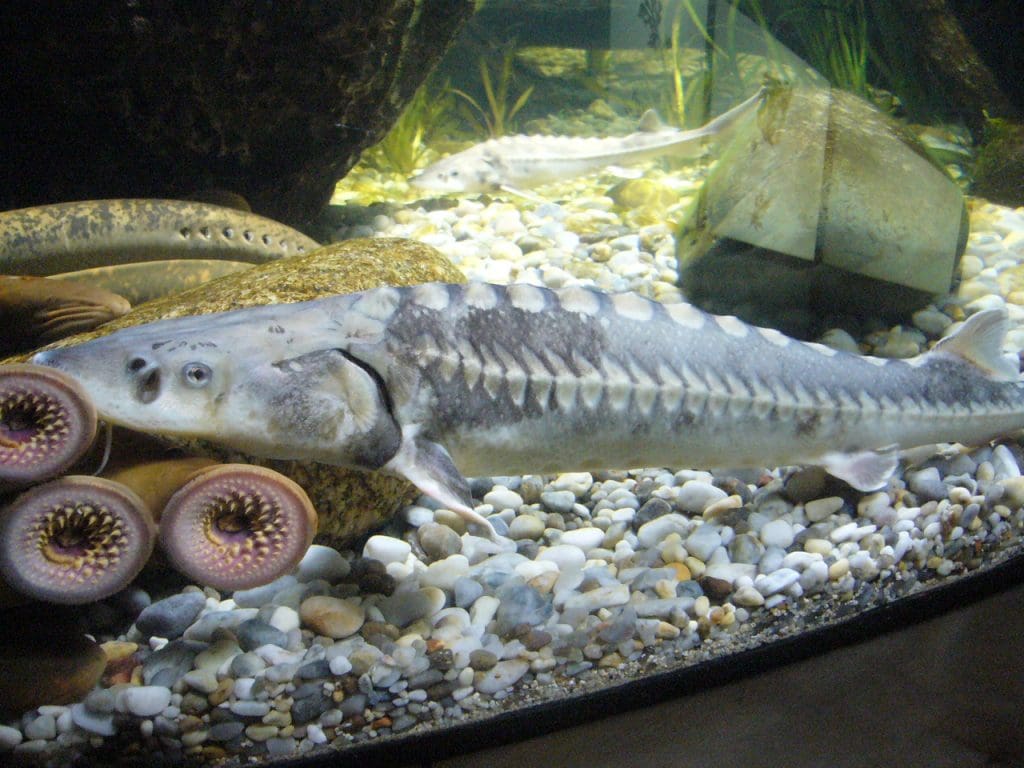
It’s an anadromous fish, meaning it migrates from saltwater to freshwater for spawning. Overfishing, habitat destruction, and pollution have drastically reduced its population. Conservation efforts have cost over half a million dollars so far and include breeding programs and habitat restoration activities that aim to save this ancient and ecologically important species from extinction.
Golden Toad
The golden toad was a brilliantly colored amphibian native to the cloud forests of Costa Rica. It gained fame for its vibrant golden-orange skin and small size, typically reaching around 5 centimeters in length. Sadly, it was last seen in 1989, making it one of the most iconic examples of amphibian decline.
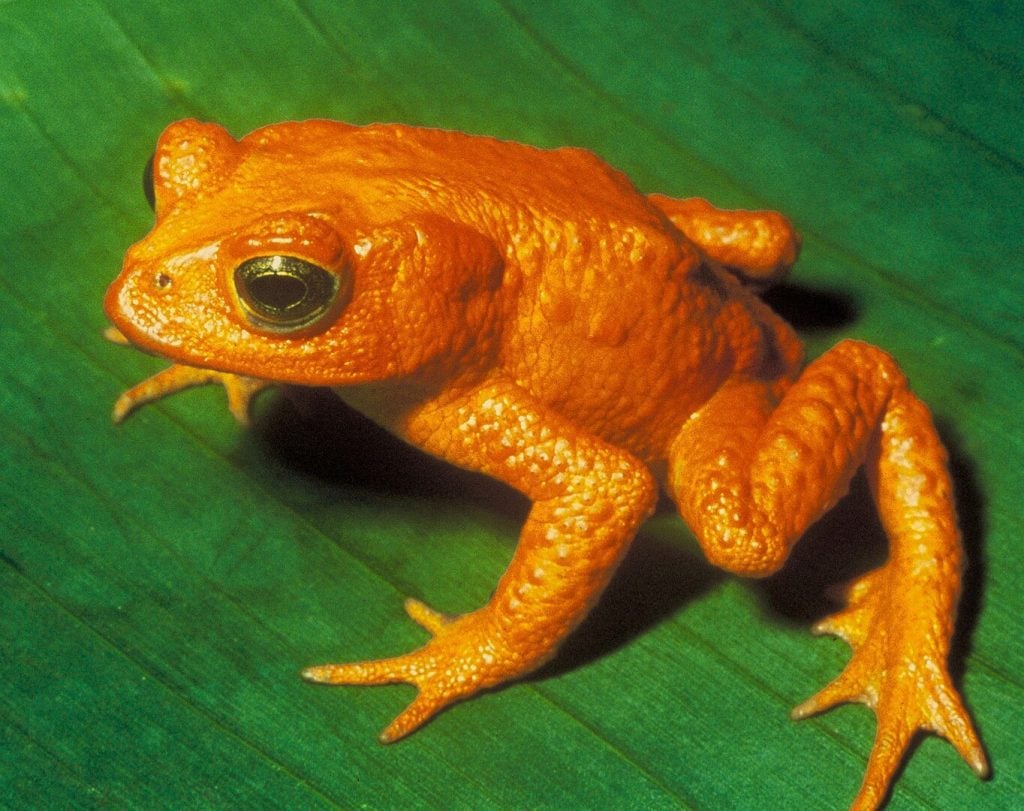
The exact cause of its extinction remains to be confirmed, but there are a number of theories. The first is change in their habitat, climate change, and a deadly chytrid fungus are believed to have played significant roles in its demise. To date, researchers from Costa Rica continue to dig deeper into their ecology.
Desert Kangaroo Rat
The desert kangaroo rat is a small rodent native to arid regions of North America. It was primarily found in desert habitats such as sandy dunes and scrublands. Known for its remarkable adaptations to desert life, it has large hind legs for hopping and fur-lined cheek pouches for storing seeds.
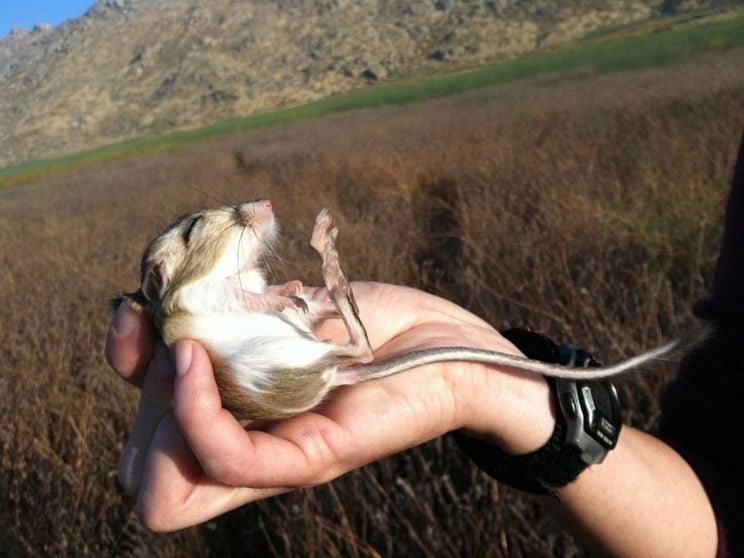
See where the ‘kangaroo’ comes from? This species was said to be nocturnal. It emerged at night to forage for seeds and vegetation. Remarkably, it didn’t need to drink water, as it obtained all the required moisture from its diet. Sadly, it was declared extinct twice, in the 1840s and again in the ’90s
Round Island Burrowing Boa
The Round Island burrowing boa is a unique snake species found exclusively on Round Island, Mauritius. It’s known for its slender body and distinctive pattern of dark markings on a light background. This non-venomous boa spends much of its time underground, where it hunts for small prey such as lizards and geckos.
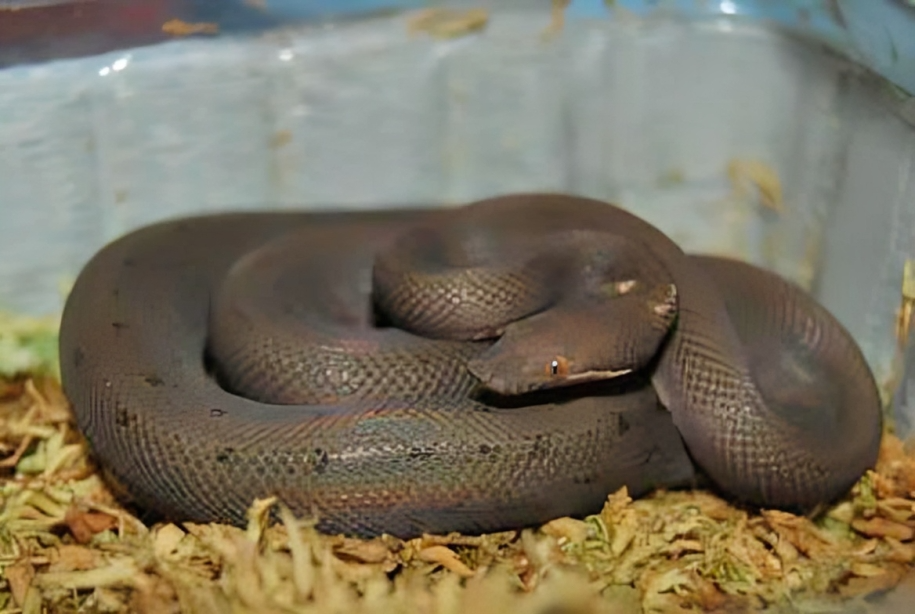
Though it’s largely considered extinct, multiple Mauritian agencies are still working on confirmation. If it’s alive, the snake faces significant threats from a decrease in its habitat. It also deals with the issue of introduced predators, resulting in a decline in its population.
Tequila Splitfin
The Tequila splitfin is a species of fish endemic to Mexico, specifically found in the Teuchitlán River and its tributaries in the state of Jalisco. It belongs to the family Goodeidae, known for viviparous reproduction, meaning they give birth to live young rather than laying eggs.
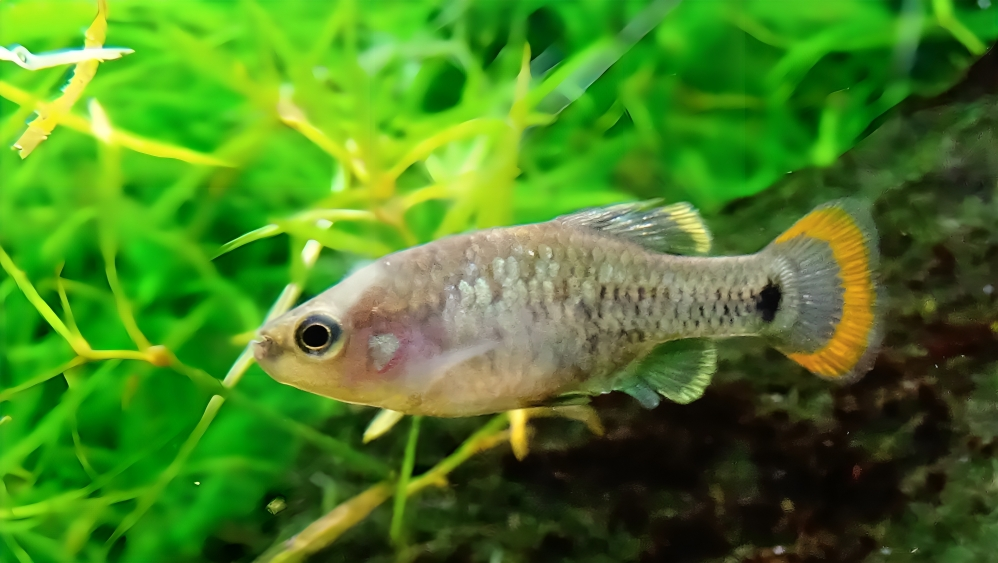
Though it was successfully reintroduced after extinction, it’s considered critically endangered due to changes in its native environments, pollution, and competition from introduced species. The University of Michigan reportedly had a budget of over $890 million for de-extinction, and seeing as they were successful, we’d say it was money well spent!
New Guinea Singing Dog
The New Guinea singing dog is a rare and primitive canid species native to the remote highlands of New Guinea. Known for its melodious howling, which is more akin to singing, it’s believed to be one of the oldest and least altered dog breeds. Over $500 million is dedicated to more research into this breed.
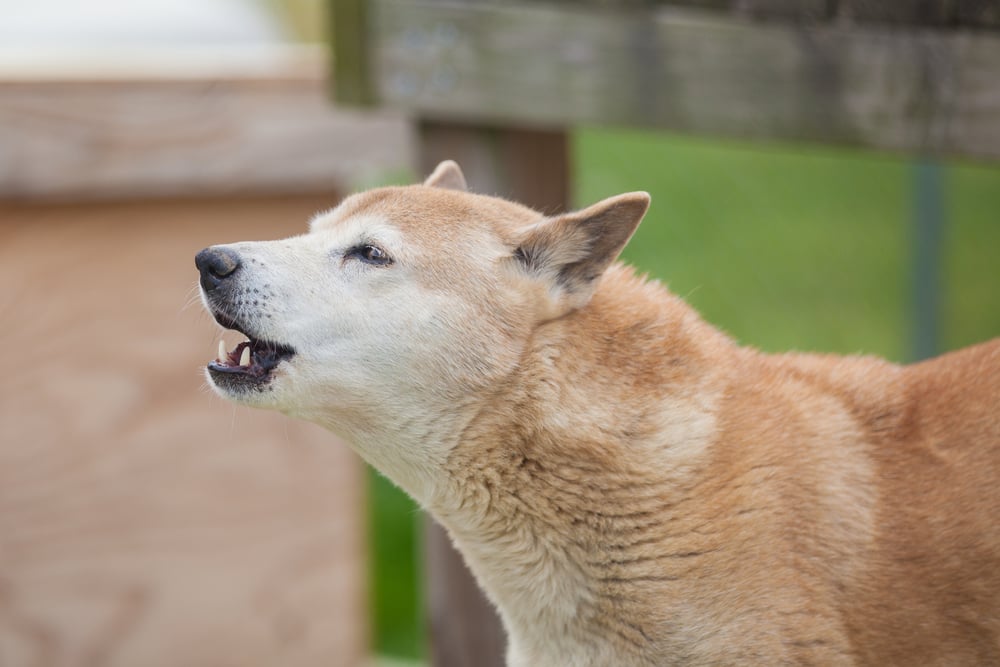
These dogs are highly adaptable to their mountainous forest habitat and exhibit unique behaviors, such as their distinctive vocalizations and elusive nature. Due to diminishing natural habitats, hunting, and hybridization with domestic dogs, they are considered endangered in the wild, though some populations exist in captivity for conservation purposes and as pets.
Gooty Sapphaire Tarantula
The Gooty Sapphire Tarantula, also known as the “Peacock Parachute Spider,” is a stunning arachnid species native to Gooty, India. Renowned for its vibrant blue coloration and intricate patterns, it is highly sought after by arachnid enthusiasts. Little ones can cost up to $200! That said, it’s important to note that it’s venomous.
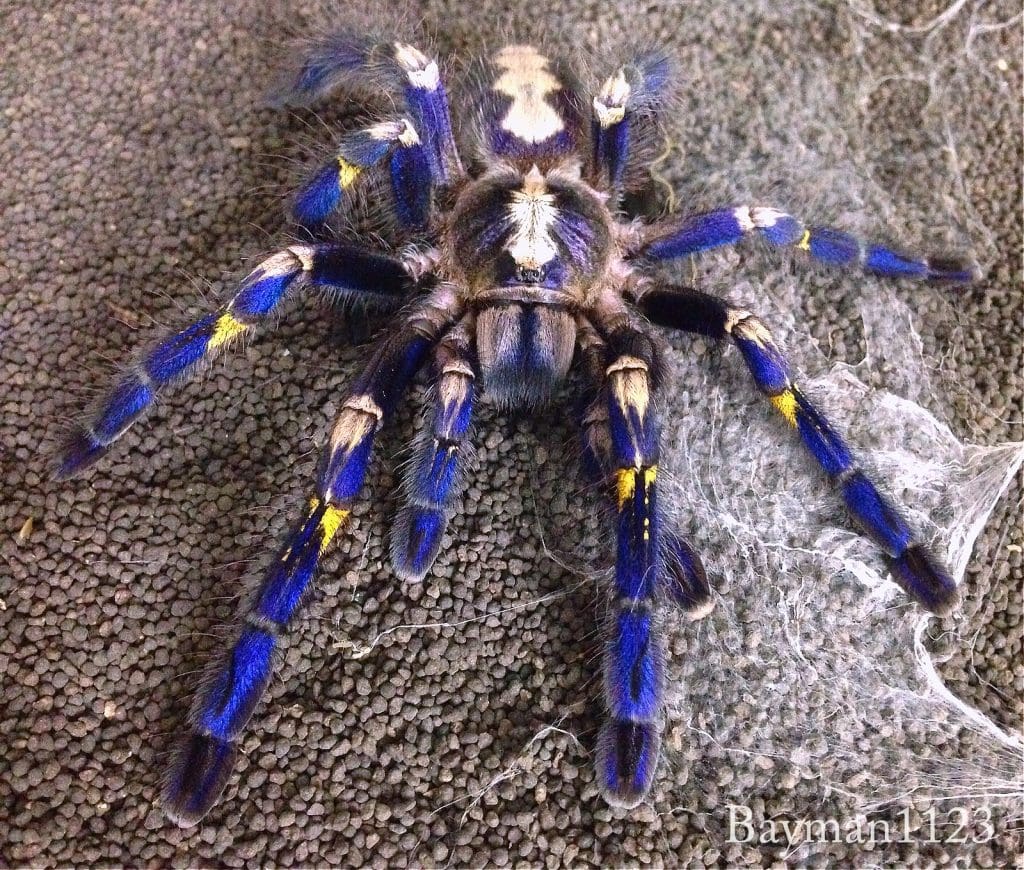
Classified as critically endangered due to habitat loss and illegal pet trade, conservation efforts are crucial for its survival. Thankfully, the IUCN has a budget of over $650 million to go towards ensuring their survival. Its captivating appearance and conservation status make it a subject of fascination and concern in the scientific community.
Mariana Fruit Dove
The Mariana Fruit Dove, endemic to the Mariana Islands in the western Pacific Ocean, is a small, colorful bird prized for its beauty. With vibrant green plumage, a distinctive orange beak, and a white belly, it’s a sight to behold. Unfortunately, this species faces severe threats due to introduced predators, and cyclones.
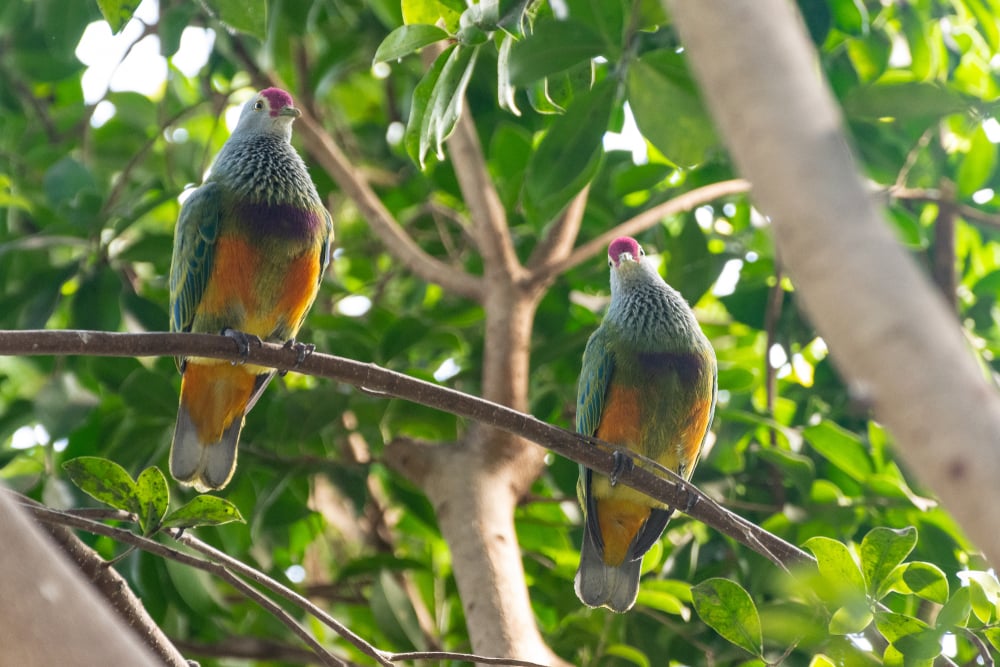
Classified as endangered, conservation efforts by three agencies are underway to protect its remaining populations and restore its habitat. This endeavor is estimated to require close to $100000. The Mariana Fruit Dove plays a vital ecological role as a seed disperser, highlighting the importance of its preservation.
Indian Vulture
Indian vultures, comprising several species like the critically endangered White-rumped, Long-billed, and Slender-billed Vultures, were once abundant scavengers in South Asia. However, they’ve faced a catastrophic decline, primarily due to the use of the veterinary drug diclofenac, which poisoned them through contaminated livestock carcasses.
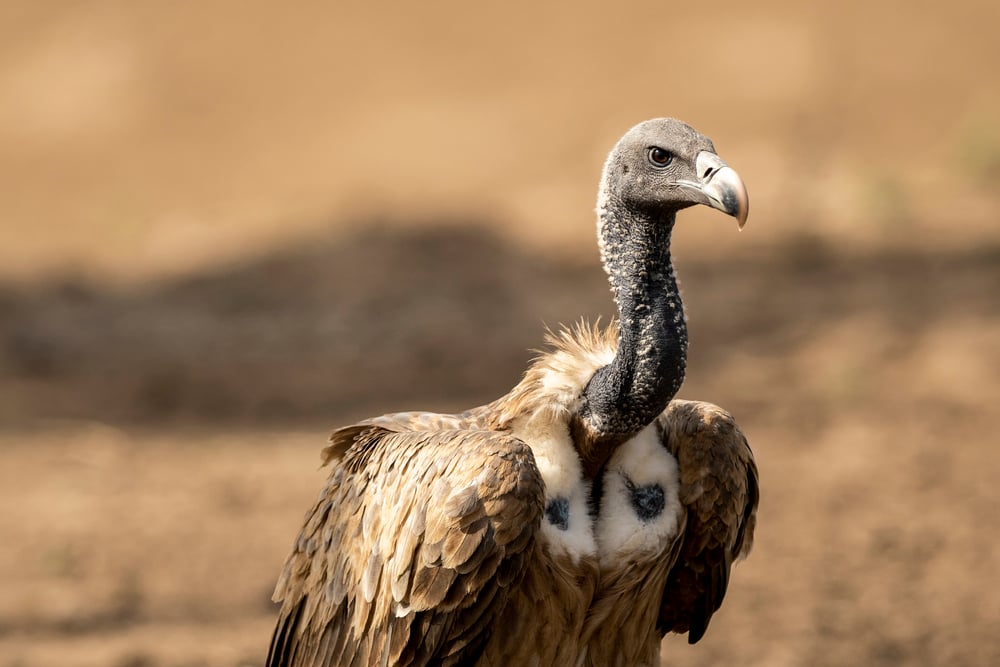
This decline led to ecological imbalances, health risks from increased carcass disposal, cultural impacts, and a reported cost of over $20 billion to the Indian government! Conservation efforts involve banning diclofenac, establishing vulture-safe zones, captive breeding programs, and community education. Despite these efforts, the recovery of Indian vulture populations sadly remains slow.
